Care for irises from sowing seeds to transplanting. Features of cultivation of Japanese, Dutch, Germanic varieties.
Contents of the
- A variety of iris bearded - yellow, red, white, blue, white-pink, purple, black: how it looks, photos
- How to buy seeds of irises in China in the online store Aliexpress?
- Cultivation of irises from seeds from China
- When is it better to plant iris bearded in spring or in autumn?
- When to plant irises in the open ground in spring and how to care?
- Planting irises in the ground and leaving in August, in autumn
- Why do not the irises bloom, some leaves?
- Transplanting irises of the bearded to another place: when is it better?
- Irrigation, care for irises after flowering
- Irises - preparation for winter: how to hide?
- Iris Dutch bulbous: planting and care
- Flower - iris Japanese: planting and care
- Flower - iris german: planting and care
- How to plant irises in the country, what plant next?
- Use of irises in landscape design: photo
- Video: irises - planting, care and reproduction
Spring and summer are a time of riot of colors and aromas. We love this period not only for the warmth, but also for the beauty of home colors. Among them are worthy of attention irises. They have entered the life of gardeners so long ago that it is difficult to imagine a site without one bush of tangents.
Their motley color, relative ease of cultivation and the ability to enrich the soil on which they grow, attract both professionals and lovers of creating beauty beds in the country.
Let's talk about irises, their cultivation and care more.
A variety of iris bearded - yellow, red, white, blue, white-pink, purple, black:
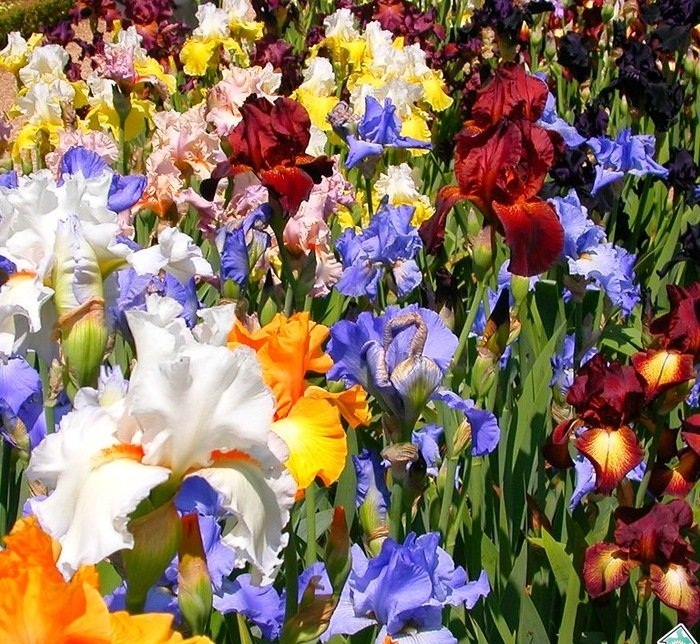 photo with flower-colored irises
photo with flower-colored irises The iris of the bearded has such a diverse palette that you want to buy and disembark each shade on your site.
Look below the photo-selection and be inspired by a similar desire:
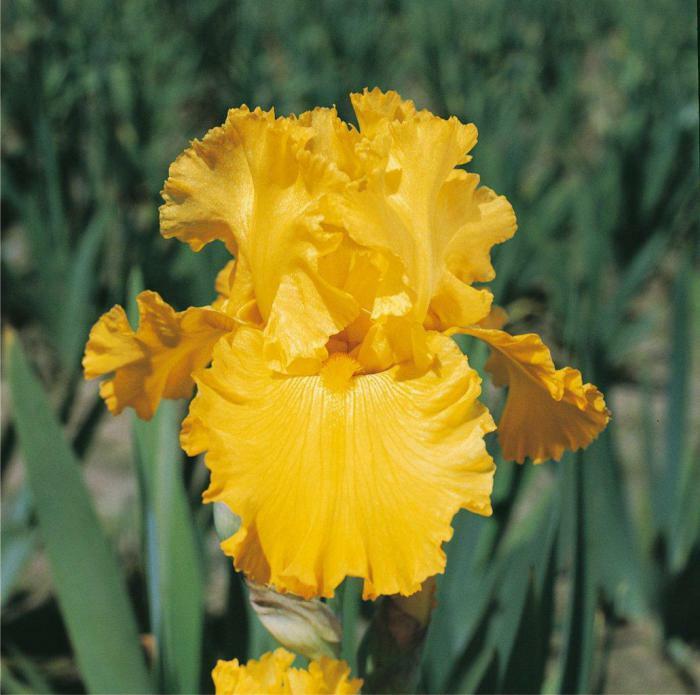 photo of yellow iris, example 1
photo of yellow iris, example 1 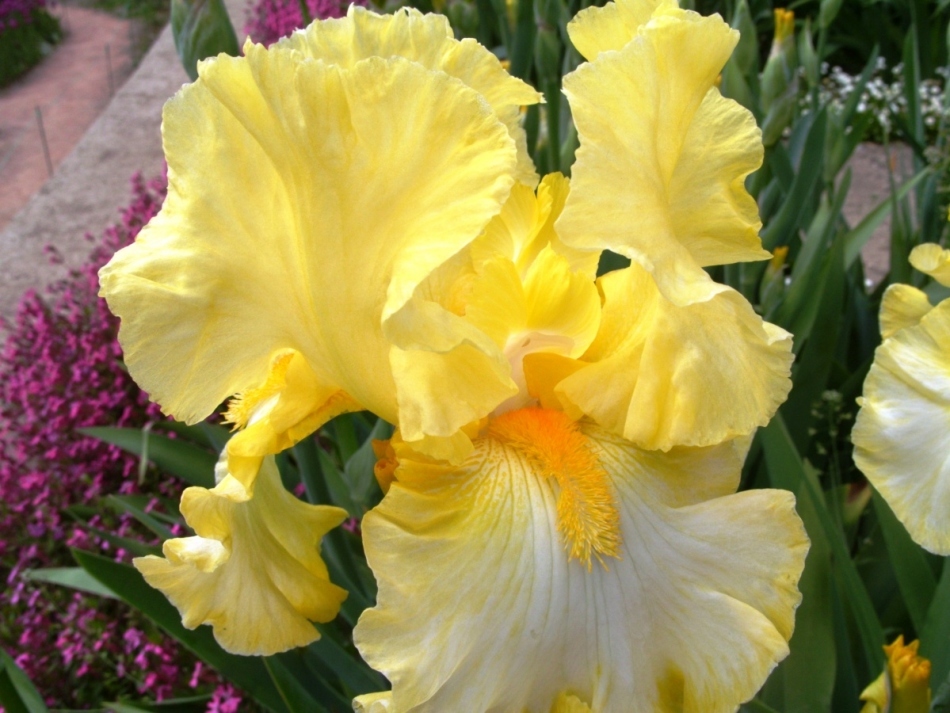 photo of yellow iris, example 2
photo of yellow iris, example 2 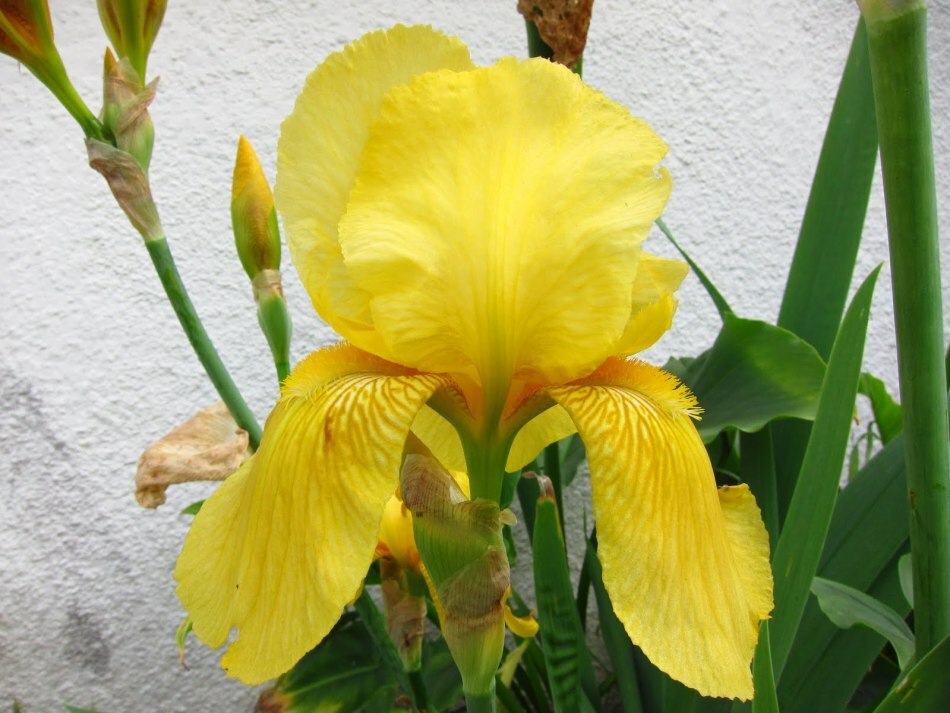 photo of yellow iris, example 3
photo of yellow iris, example 3 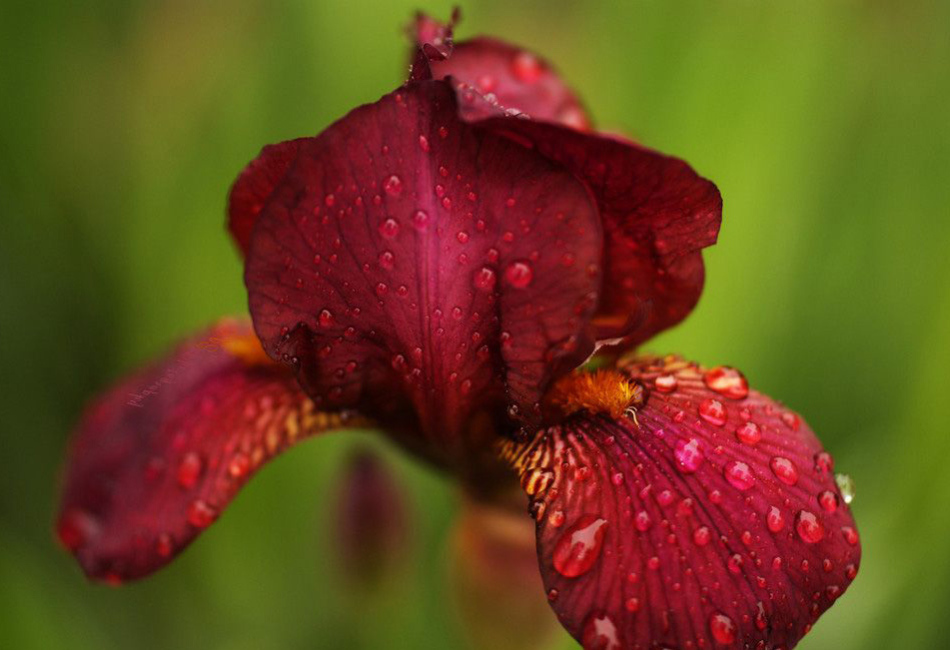 photo of red iris, example 1
photo of red iris, example 1 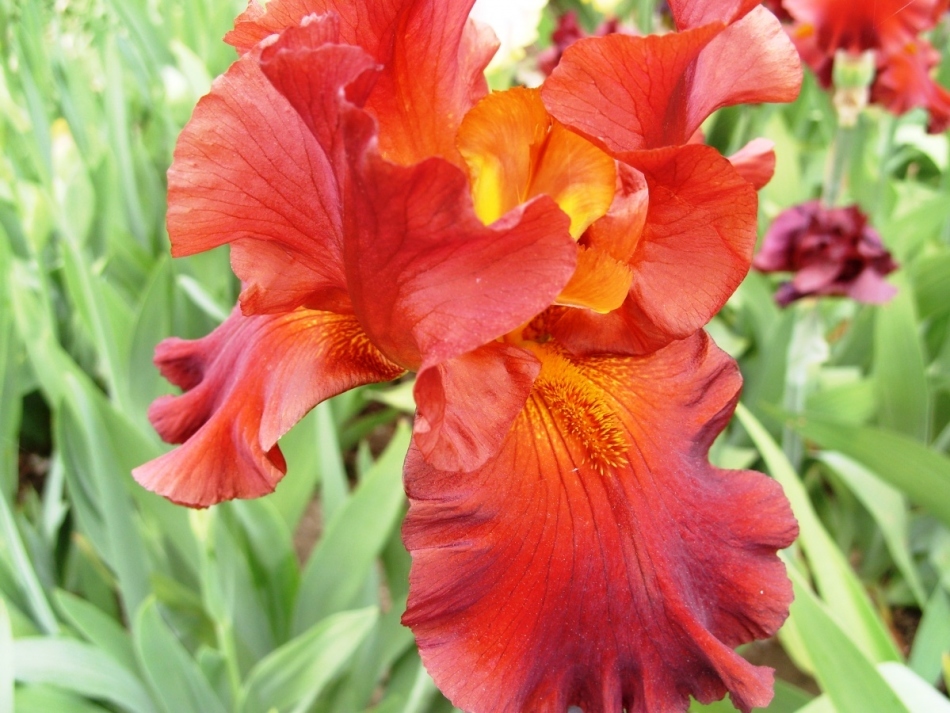 photo of red iris, example 2
photo of red iris, example 2 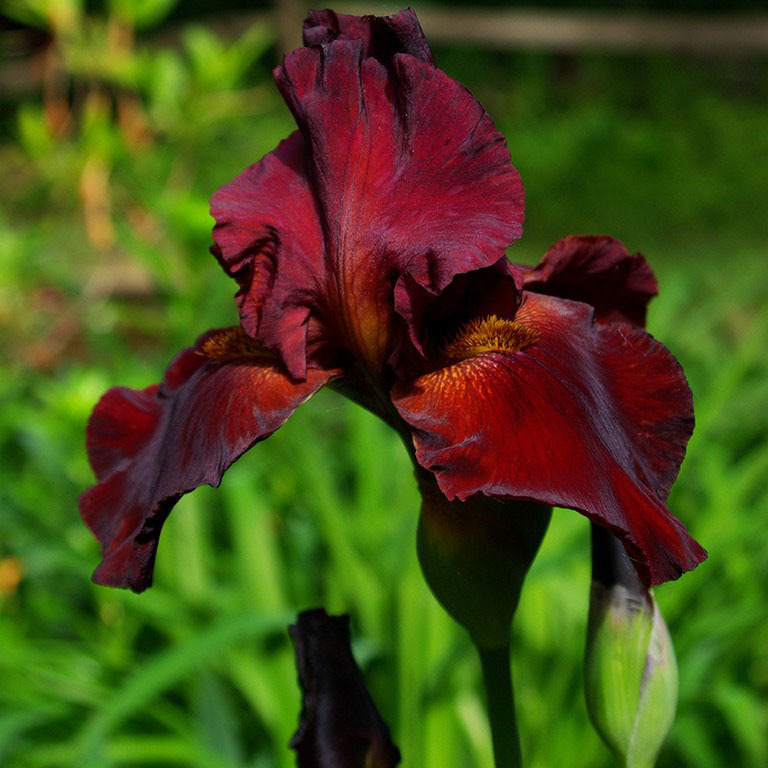 photo of red iris, Example 3
photo of red iris, Example 3 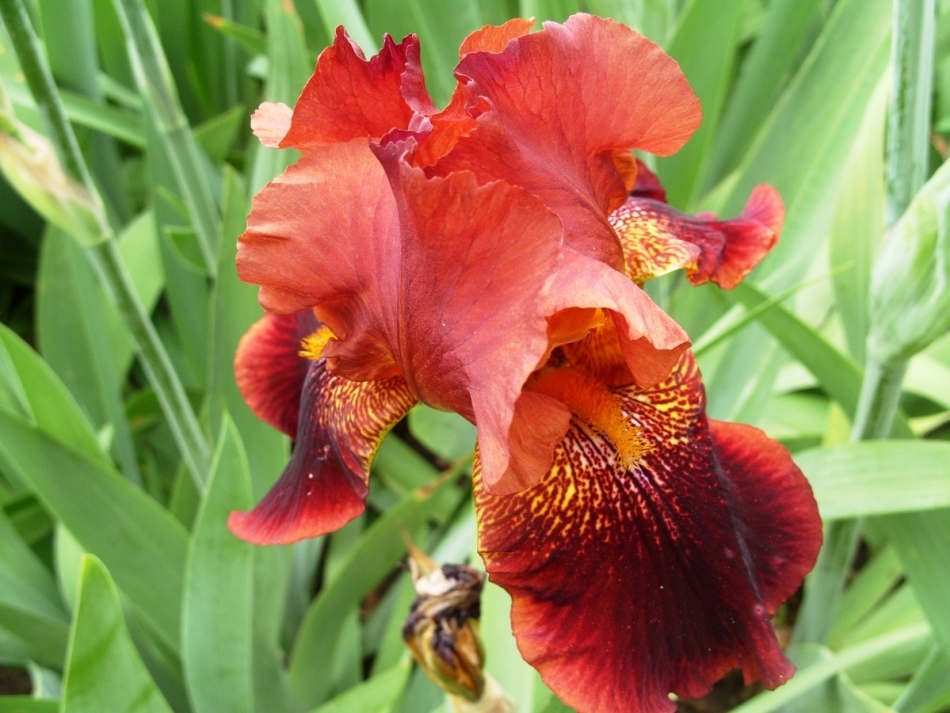 photo of red iris, example 4
photo of red iris, example 4 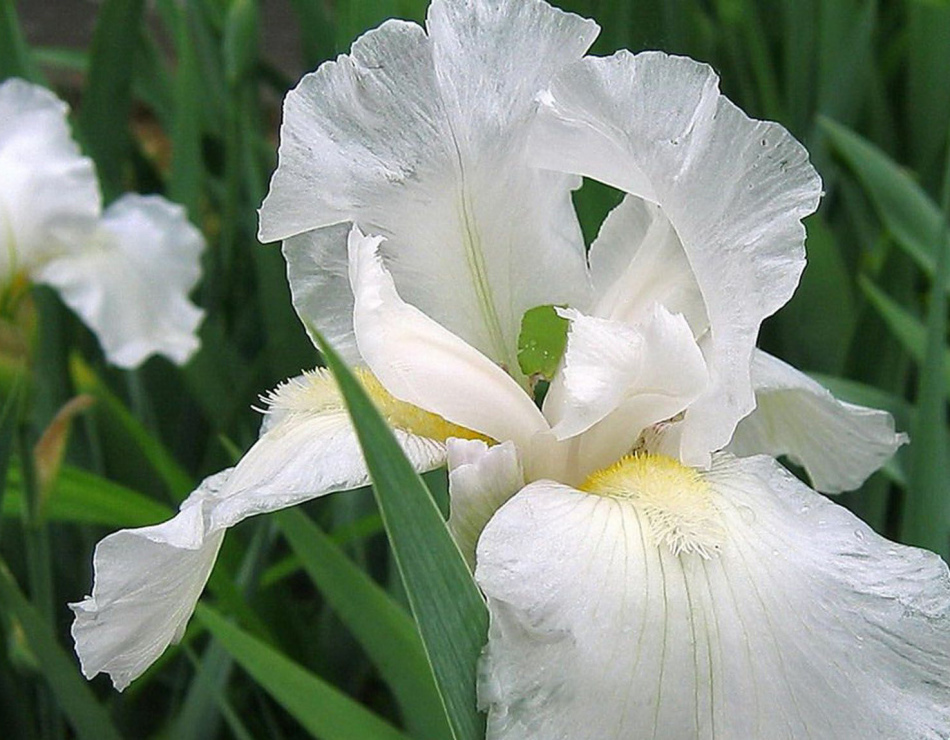 photo of white iris, example 1
photo of white iris, example 1 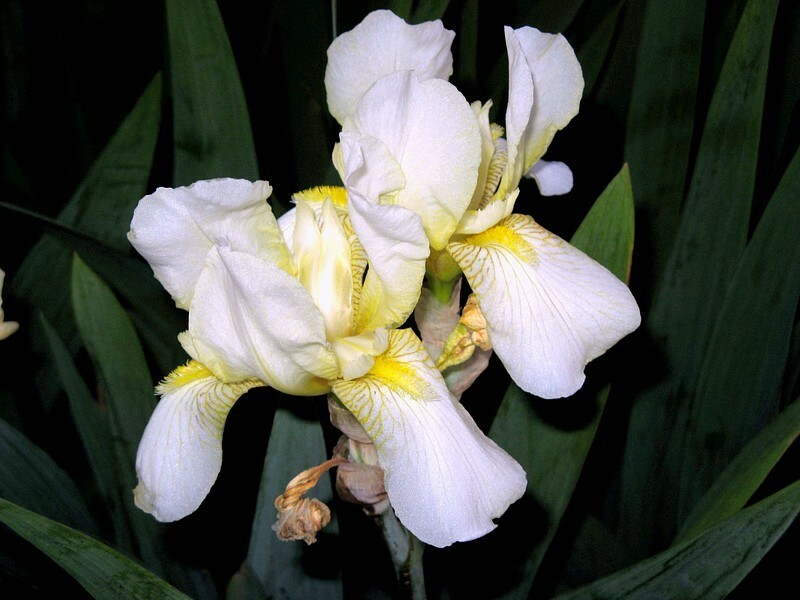 photo of white iris, example 2
photo of white iris, example 2 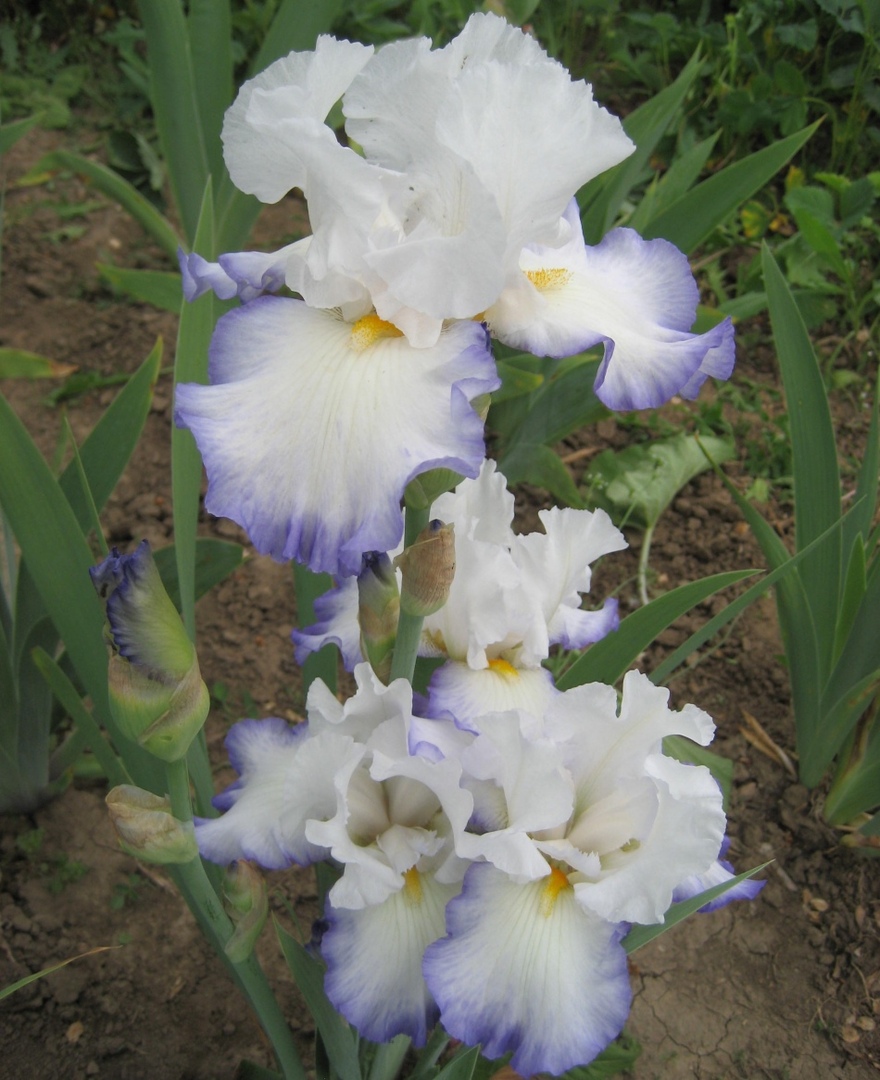 photo of white iris, example 3
photo of white iris, example 3 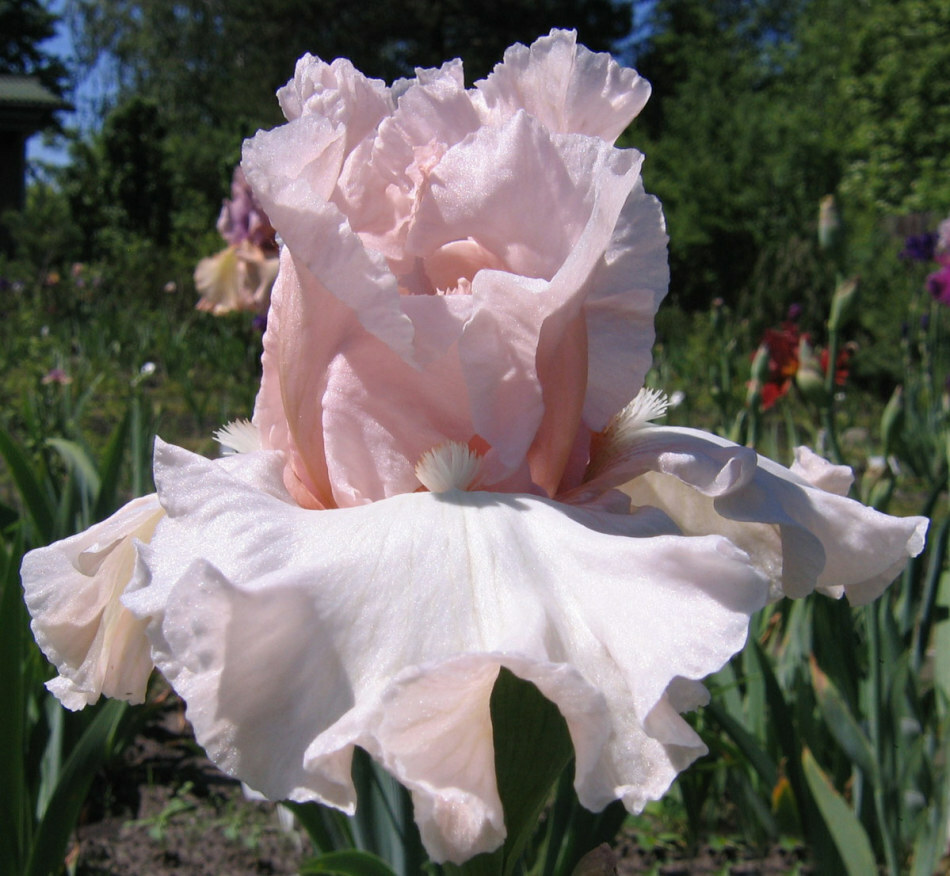 white and pink iris Dreams of love
white and pink iris Dreams of love 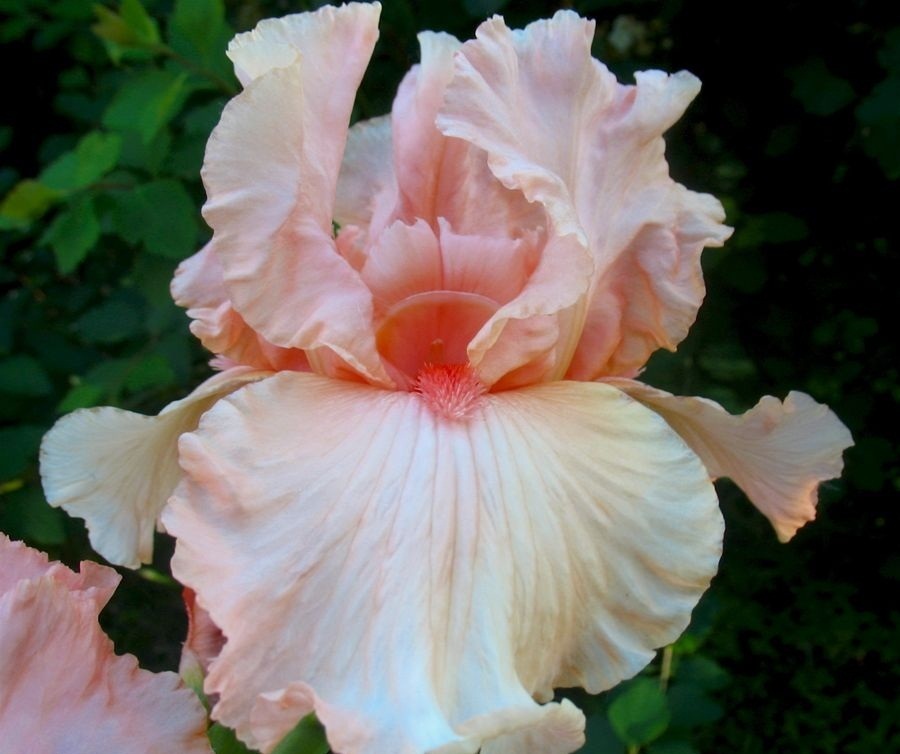 white and pink rice Blushing kiss
white and pink rice Blushing kiss 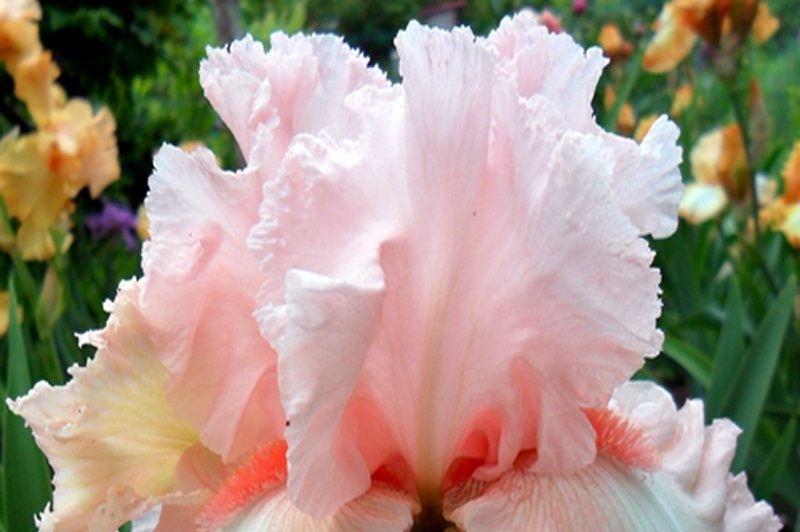 white and pink irisKentucky Vumen
white and pink irisKentucky Vumen 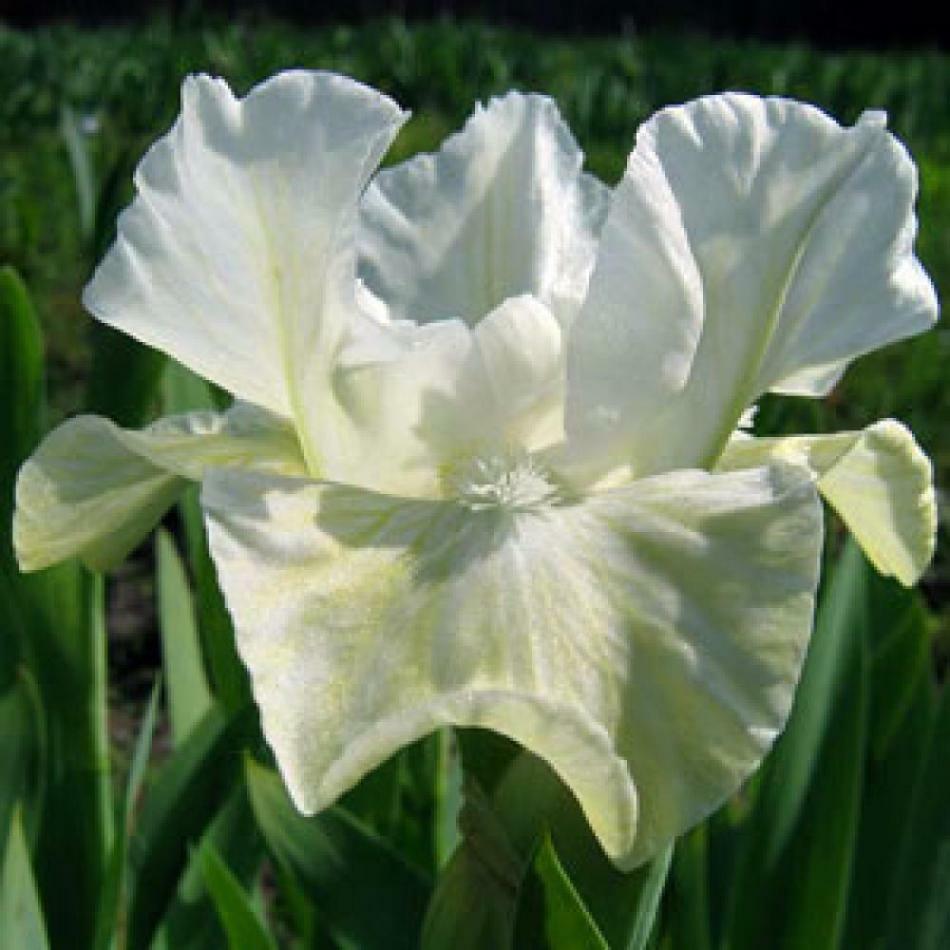 whiterice variety White Lotus
whiterice variety White Lotus 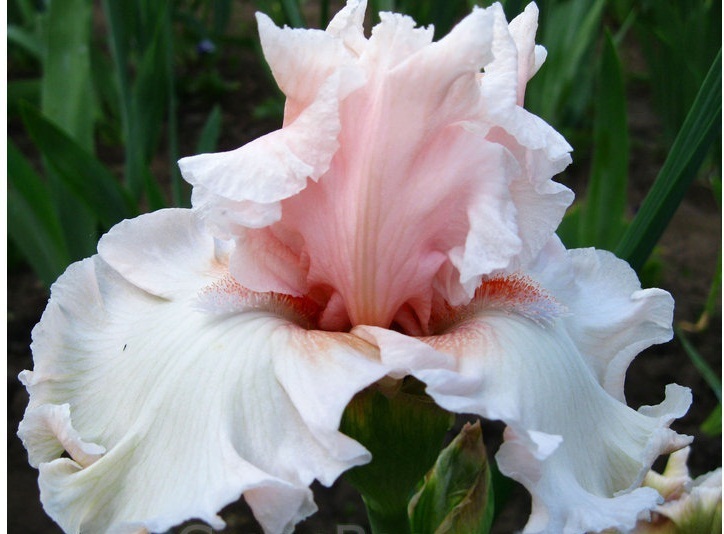 photo white-pink iris Sositei Page
photo white-pink iris Sositei Page 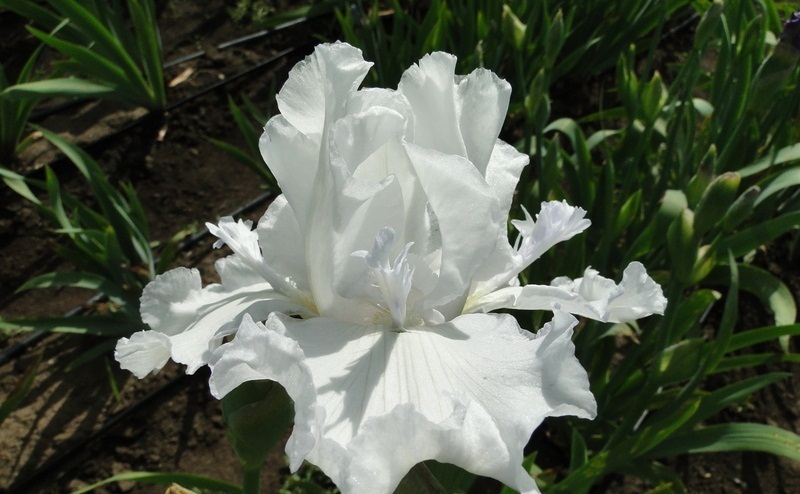 photo white iris mesmerizer
photo white iris mesmerizer 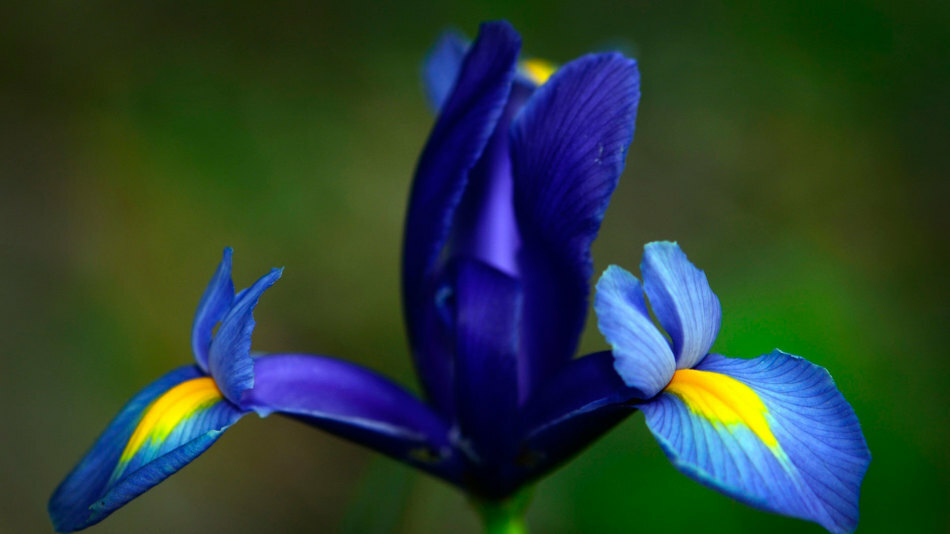 blue iris, example 1
blue iris, example 1 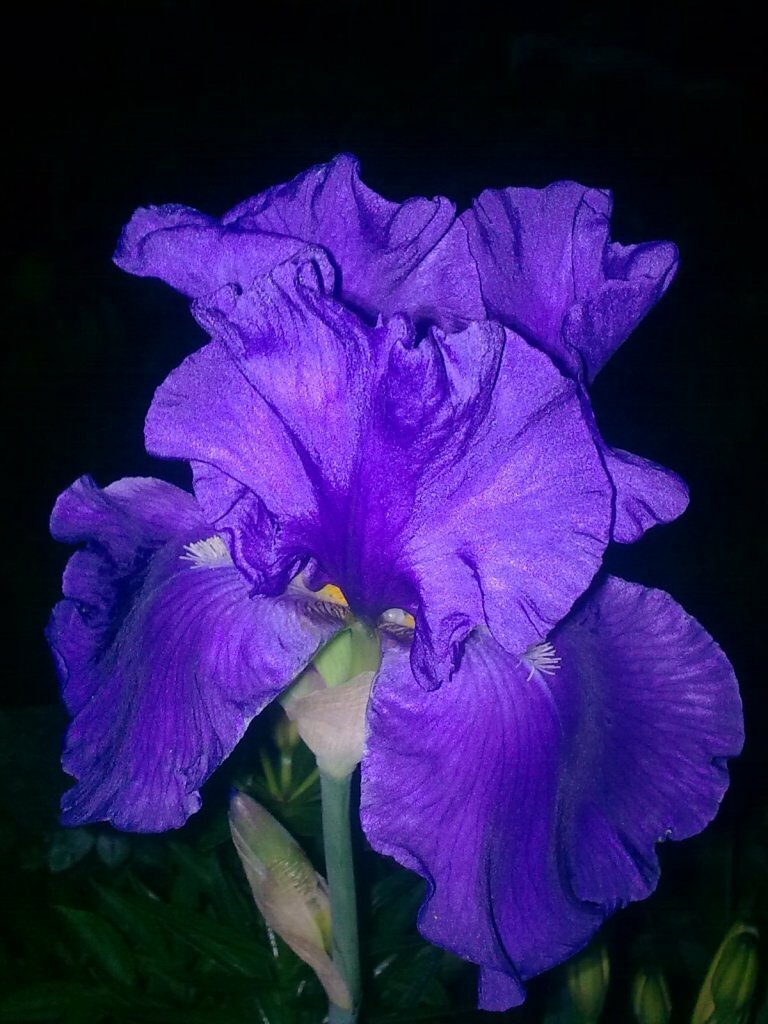 blue iris, example 2
blue iris, example 2 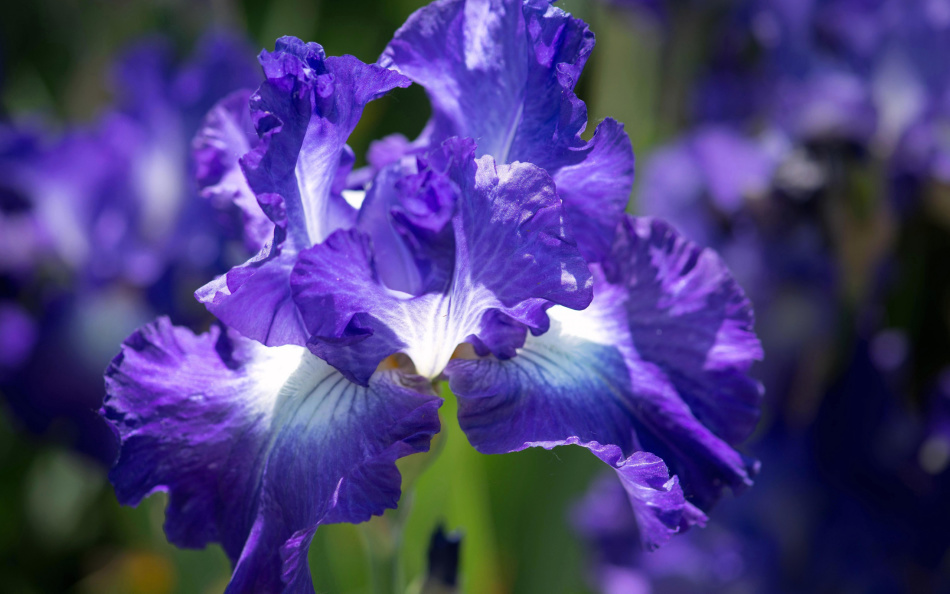 blue iris, example 3
blue iris, example 3 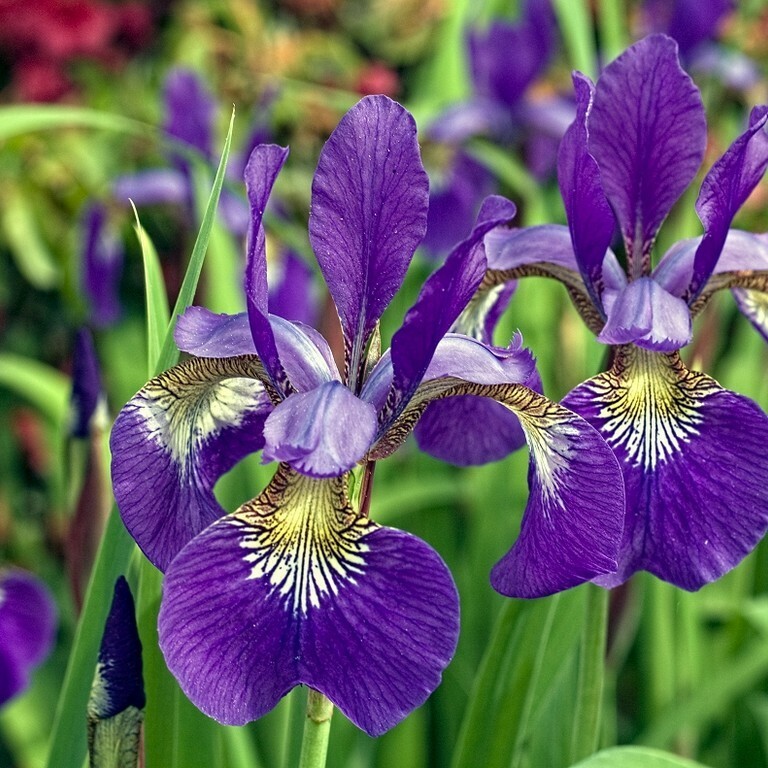 purple iris, example 1
purple iris, example 1 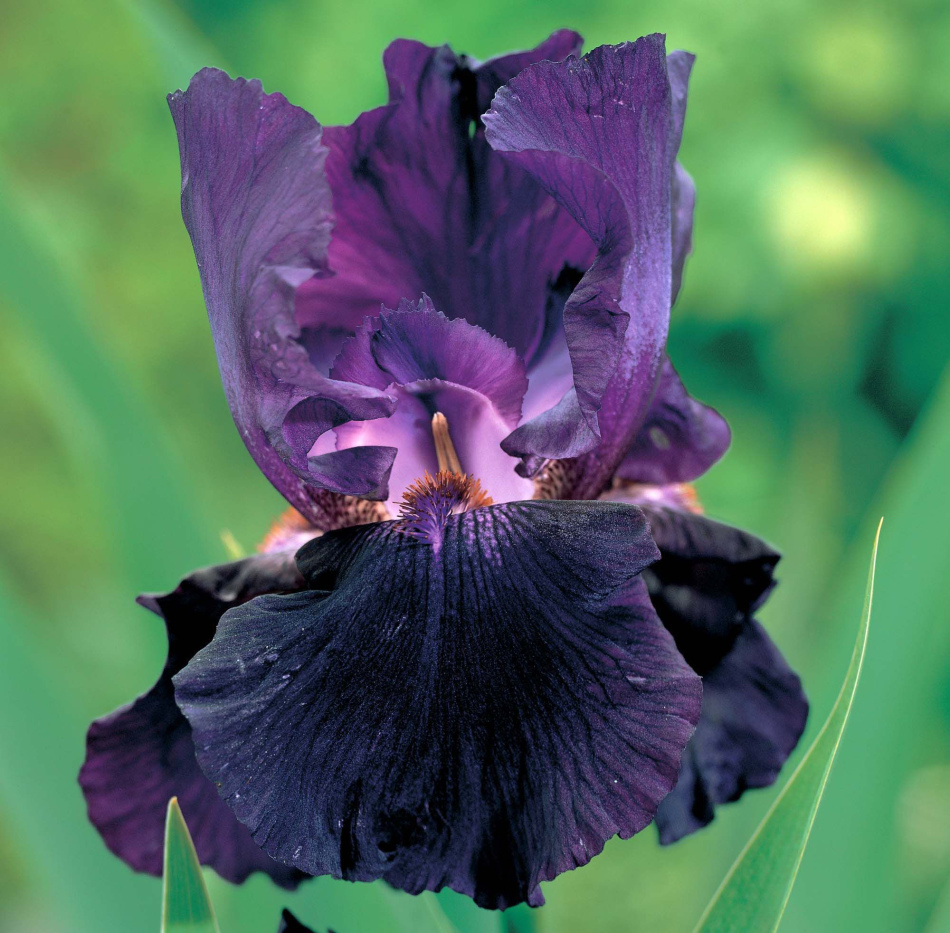 purple iris, example 2
purple iris, example 2 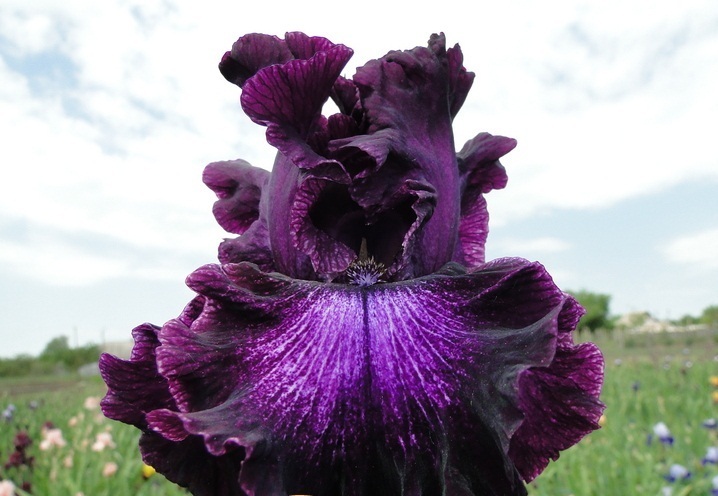 purple irisBubble Bubble
purple irisBubble Bubble 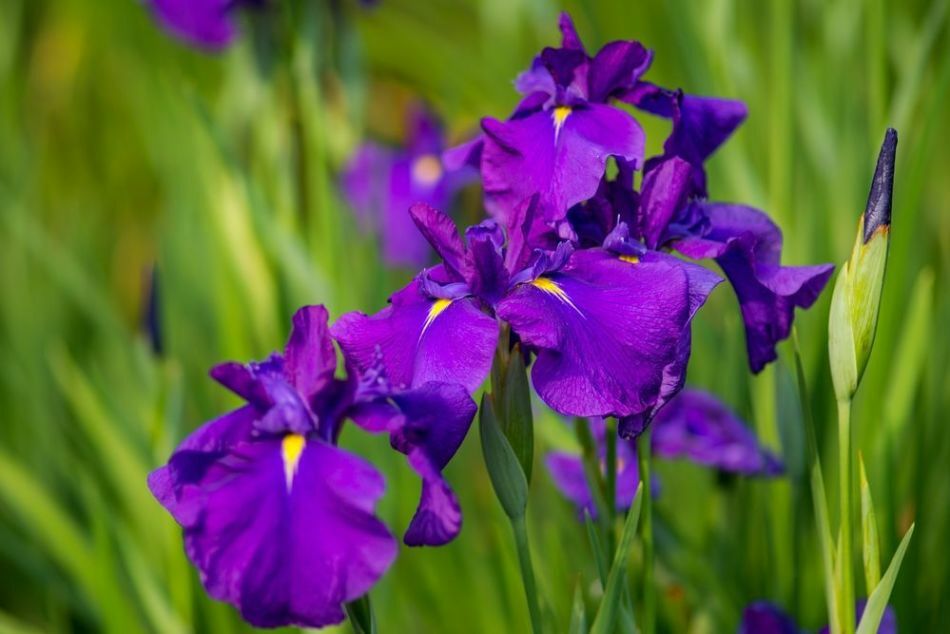 Purple Iris, Example 2
Purple Iris, Example 2  Black Iris, Example 1
Black Iris, Example 1 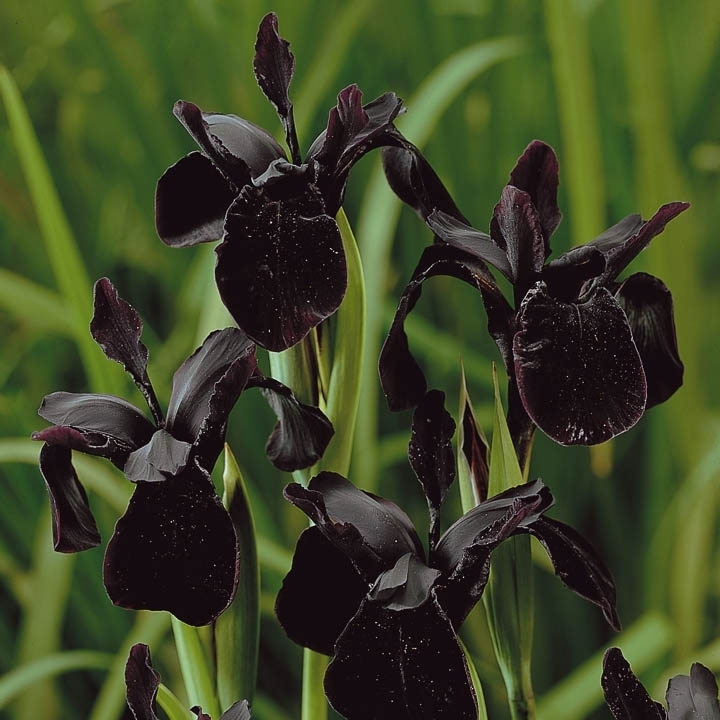 black iris, Example 2
black iris, Example 2 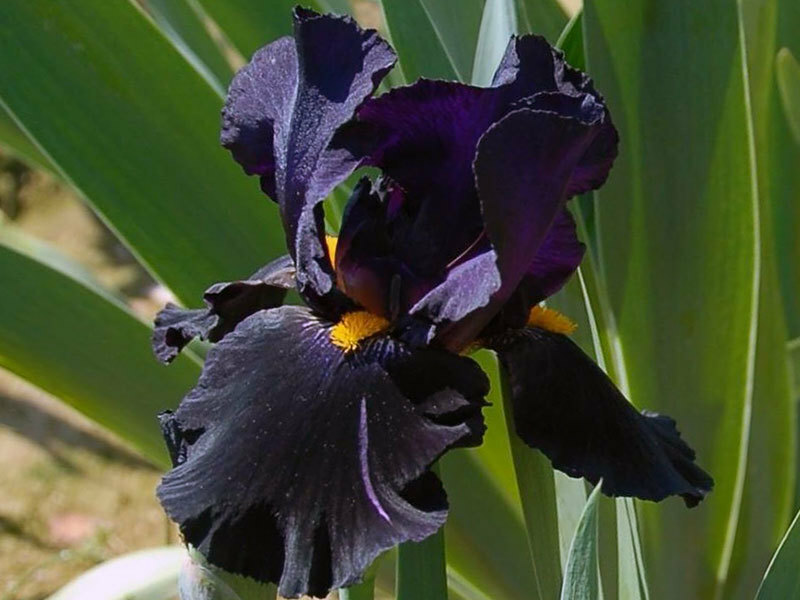 black iris, Example 3
black iris, Example 3 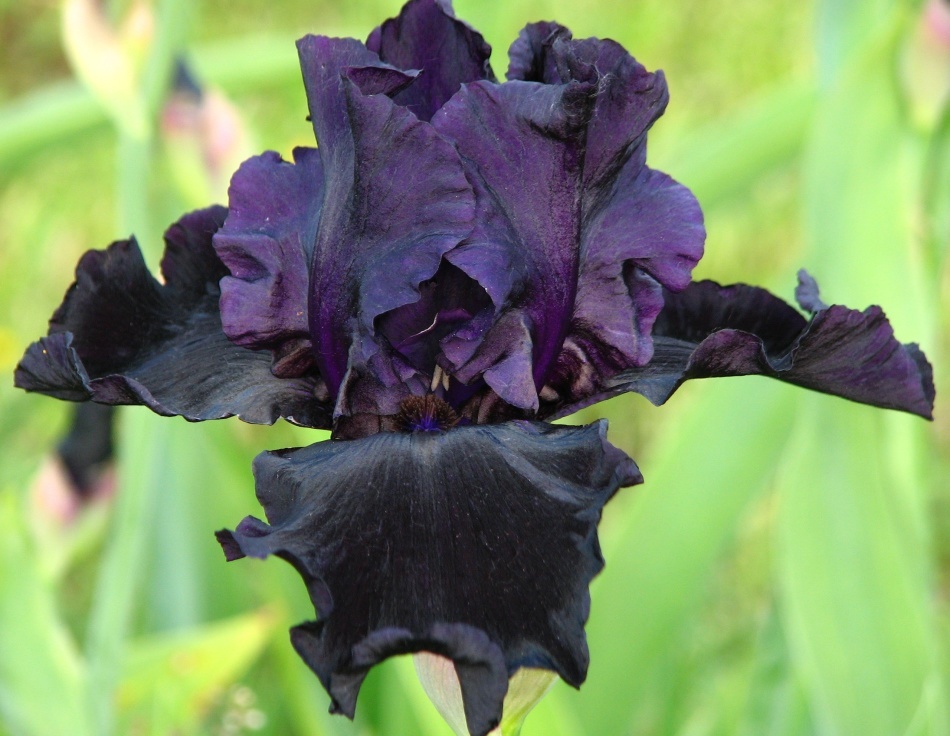 black iris Dark Piece
black iris Dark Piece 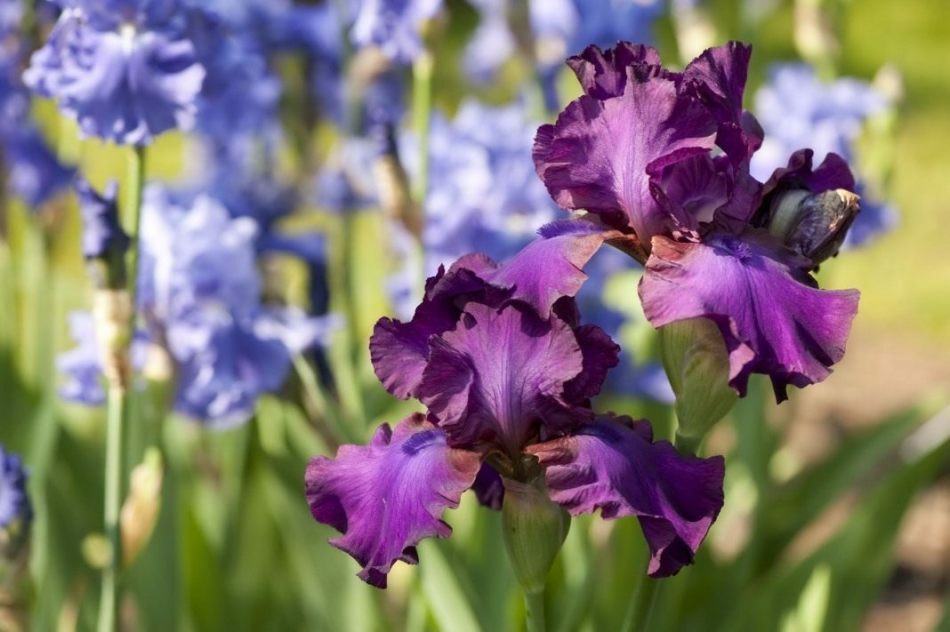 purple iris Gypsy Romens
purple iris Gypsy Romens How to buy seeds of irises in China in the online store of Aliexpress?
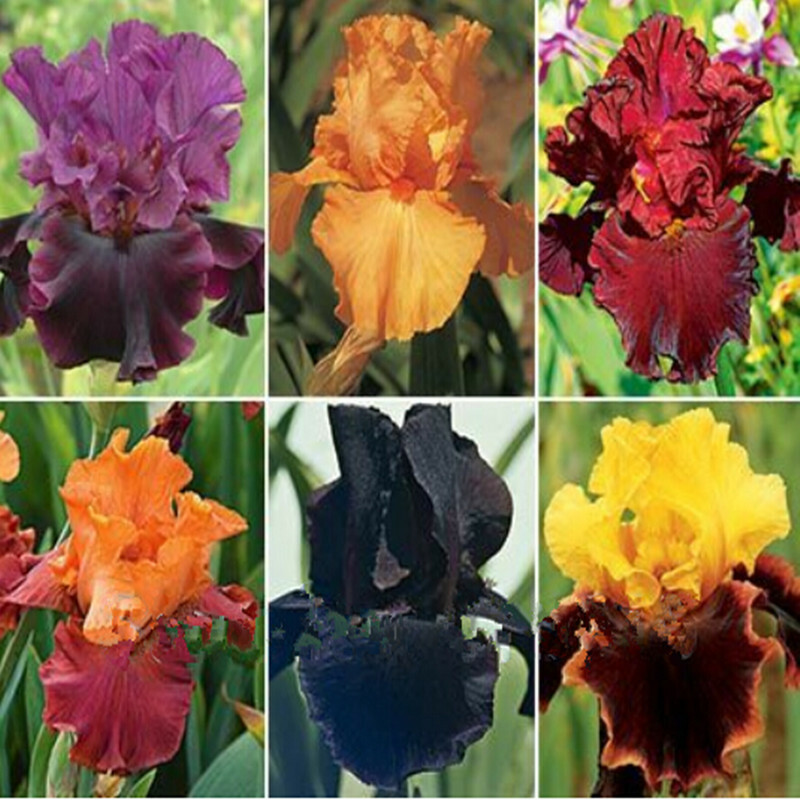 collage of photos of irises, the seeds of which are sold on Alyexpress
collage of photos of irises, the seeds of which are sold on Alyexpress If you are fired by the desire to diversify the color range of your flower bed at the cottage / near the house with exotic varieties of irises, visit Aliexpress.
In the search engine on the main page, enter the query "iris of the seed" with the letter "I" on the end, because the "a" results are zero.
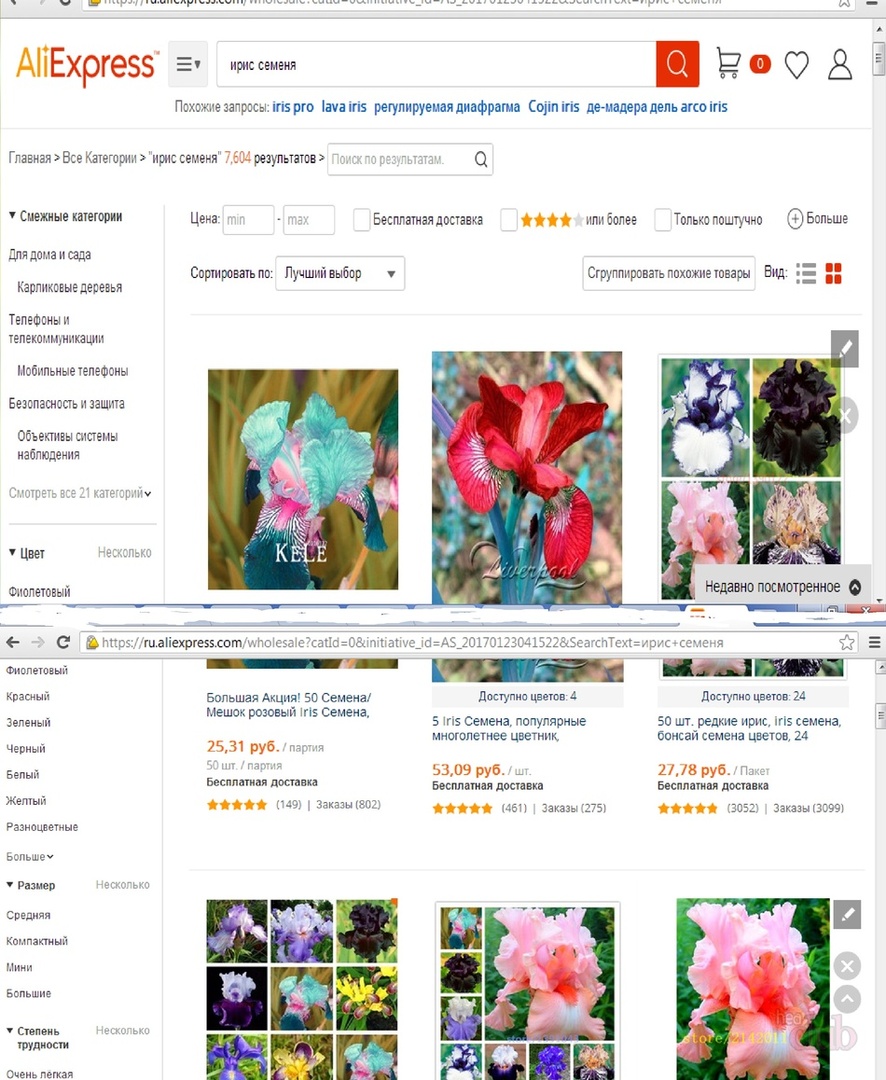 screen image of Aliexpress with search result "iris seeds"
screen image of Aliexpress with search result "iris seeds" Either in English, "iris tectorum".
 screen of the page Alyexpress with the results of the capture of iris seeds on request «iris tectorum»
screen of the page Alyexpress with the results of the capture of iris seeds on request «iris tectorum» We spoke about the registration rules for Alyexpress here, about the features of ordering the goods - here.
Cultivation of irises from seeds from China
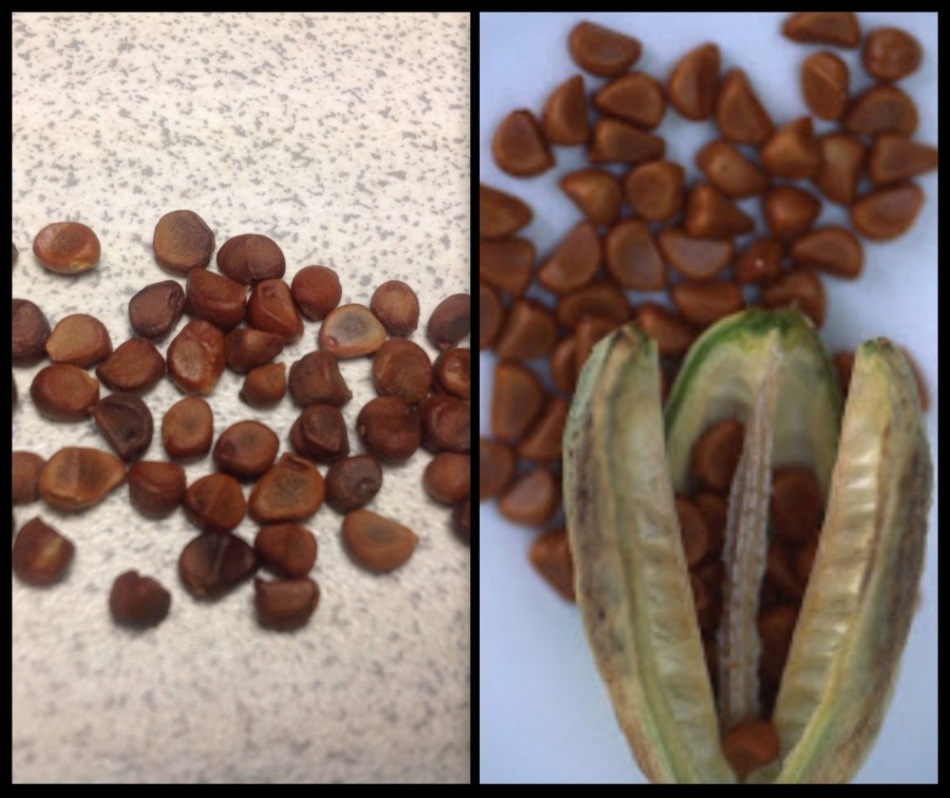 photos of iris seeds
photos of iris seeds To increase the chances of 100% germination of iris seeds, select species before their purchase, rather than varietal ones, before purchasing.
As the seeds will come to you from distant China, do not plant them directly into the ground. Because there is no exact information on the date of their collection. They could be stored until sale not one week.
- If you bought seeds in the early autumn, prepare peat pots with sandy soil for them and sow.
- Pots dig in an open area with good light.
- With the first frosts, cover the site with the seedlings of straw, leaves.
Experienced gardeners for this purpose use sintepon, which is used in sewing.
If your seeds have time to germinate before the winter cold, then such a warm pillow will protect them from freezing and keep free air flow.
If the seeds you received in winter, prepare them for planting in spring in open soil. To do this, spend the stratification of the seeds of irises:
- soak the rag with water
- spread the seeds inside it and wrap
- in polyethylene and in the tray
- , place the latter in the refrigerator under the freezer so that the temperature is -3-5 ℃
All the above actions take place in a monthbefore landing in the ground. For example, in February, then in March, sow seeds in the open soil.
Stratification softens the seed coat so that the germ can penetrate it during growth.
Be prepared for the fact that the flowering of irises after sowing seeds will only be visible for 3-4 years after landing in the open ground.
When is it better to plant an iris bearded in spring or autumn?
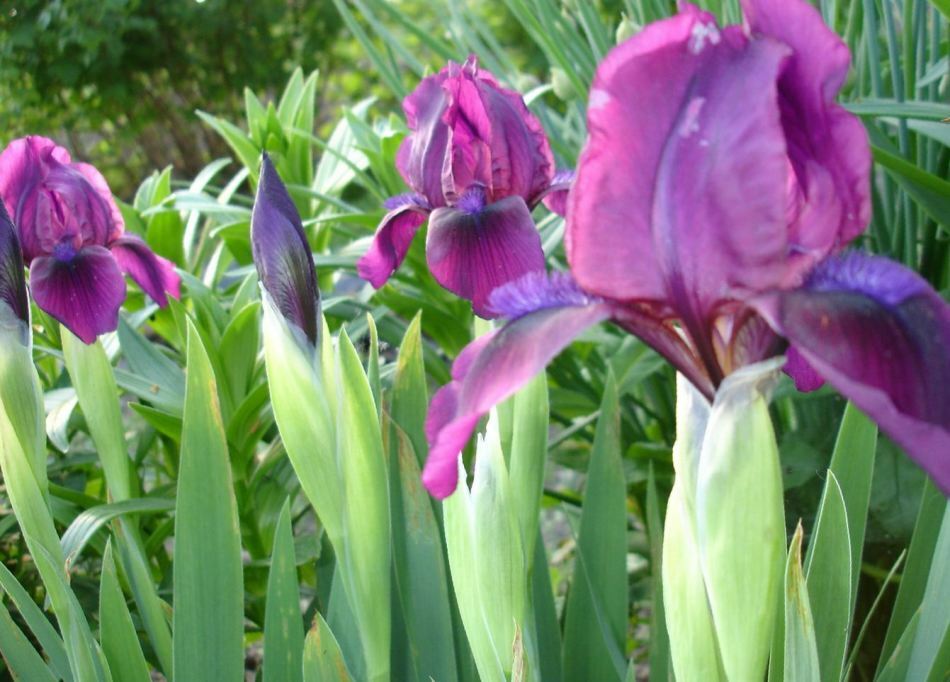 flowerbed with classic bearded irises planted in autumn
flowerbed with classic bearded irises planted in autumn - Bearded iris species multiply by roots. Therefore, the best time for their separation and planting is the end of summer-autumn.
- During this period, the irises have already faded, their rhizomes are full of strength and will well carry all the manipulations of separation.
- The second important point - young plants will have time to adapt to the soil and conditions on the flowerbed. They will be ready for wintering and for a new warm season.
If you have purchased the rhizomes of the desired bearded iris species later, store them as follows:
- carefully review the condition of the roots, remove the damaged and decayed areas with the
- knife, lower the roots for a third of the hour in a weak solution of limestone
- , leave to dry in the sun or on the windowsill in the
- heatin a box and sprinkle with sawdust or dry peat
- store in a cool room, for example, on the balcony until spring
In spring, after thawing snow, plant the roots of irises in the prepared soil. Pay attention - they will show the maximum flowering only through the father of years.
When to plant irises in the open ground in spring and how to care?
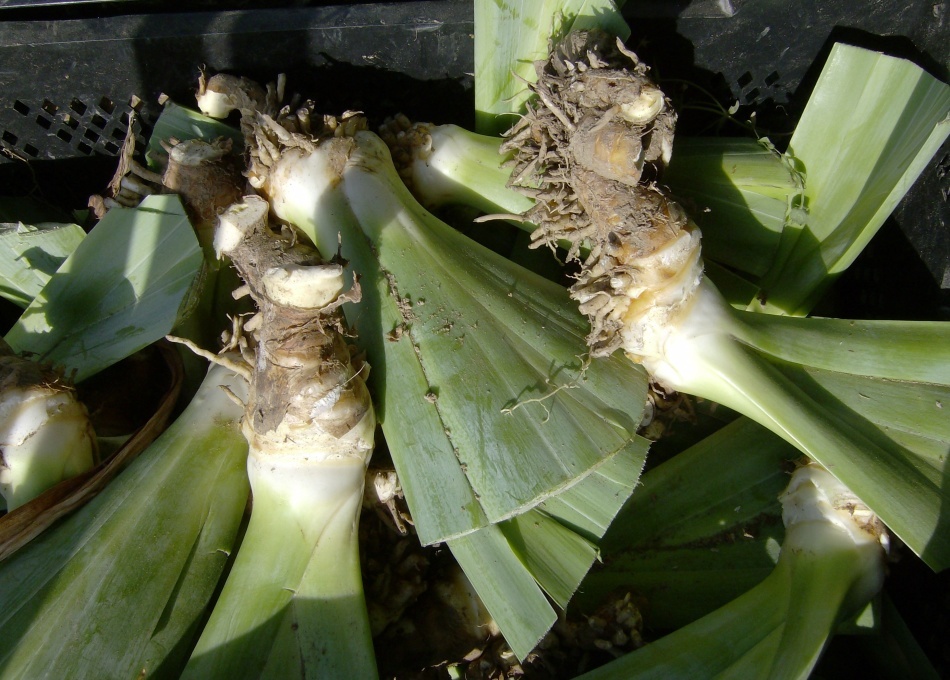 separated young irises before planting
separated young irises before planting Depending on the type of irises, there are differences in their spring planting in the open ground.
The common thing is the preparation of the soil. For this:
- determine the type of soil and add to it those substances with which it is poor. For example, acid neutralize ash, dolomite flour, chalk,
with an excess of sand - a land with a high clay content,
loam - peat and sand, - enriched ordinary soil with compost and phosphate-potassium fertilizers. Dung does not fit as a source of nutrients for iris in the spring,
- choose a well-lit place in the morning without drafts on the site. After dinner, if it is shaded,
- disinfect the soil and inhibit the development of weeds with a fungicide and herbicides, respectively,
- , think through and drain on the area under the irises.
- plant the seedlings in a certain order - chessboard, in pursuit, in a circle. In the first two versions, observe the distance between the holes in 40-50 cm, in the third - 30 cm,
- feed the plants only until the formation of flower buds. Irises are unpretentious in their care, therefore they do not need additional fertilization of the soil with fertilizers.
Further there are differences in the planting of plants:
- bearded irises planted in not deep pits, in the center of which pour a hillock of dry soil / sand. The root lay on it, straighten the roots. Sprinkle the hole so that the top part of the root remains visible,
- other types of irises deepen in the holes for 2-3 cm without opening the root system,
- after planting, pour under the root of irises of all species except bearded. The latter will appreciate the additional watering only in the case of extremely arid spring / summer,
- drainage is mandatory for the soil under the bearded irises, so as not to increase its moisture. Other types of plants like moisture in the ground.
When the diseases of irises try to react as quickly as possible:
- withered and yellowed leaves, buds, flowers - signal about the danger of infection of other plants. Therefore, remove the diseased with the root and burn,
- from slugs spread between the rows of wet rags or burdock sheets at night. In the morning, collect them together with slugs and discard,
- spray preparations from diseases only until the formation of buds with flowers,
- after flowering, view the iridium and remove the sick specimens.
Planting of irises in the ground and care in August, in autumn
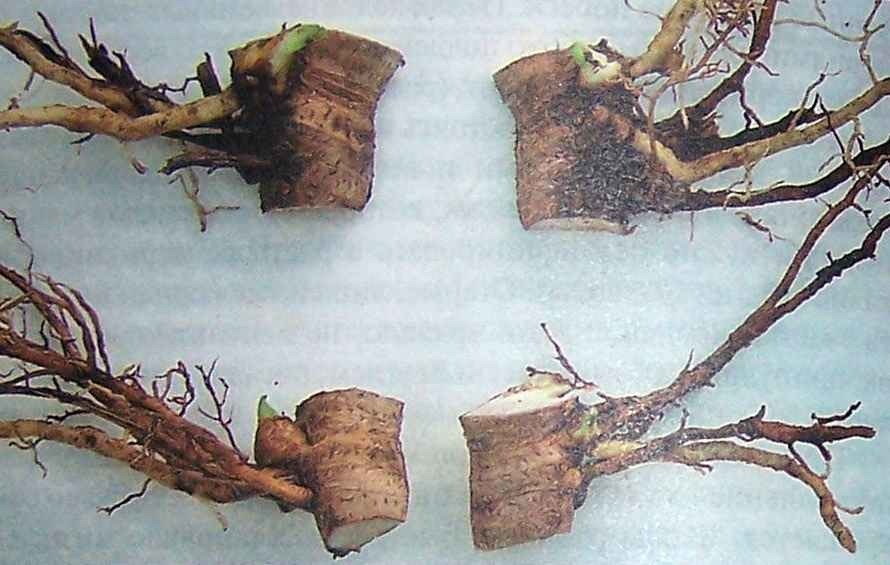 separated root of iris for planting in August
separated root of iris for planting in August Frontier of summer and autumn - it's time to transplant irises to another place or to reproduce them vegetatively, by roots.
- Bearded specimens are to be dug out with forks to avoid injuring the roots.
- Brush them off the ground and divide the mother's root with a knife, hands, shovel. On each segment, keep 1-3 kidneys, a couple of root hairs and several leaves. Cut the last fan to a third.
- Cut the affected areas with a knife.
- Treat the resulting material with a weak solution of potassium permanganate, allow to dry in the sun. Cut the cuts with a mixture of charcoal and sulfur.
- Plant according to the recommendations of the previous section.
- Water the bearded irises rarely.
- Feed plants in autumn before wintering with mineral fertilizers. Then the iris will have the strength to endure the cold and start a new growth cycle in the spring.
- Sprinkle the flower bed immediately after the first frosts with fallen leaves, a spade, sawdust or light synthetic materials, so that the plants are not killed / damaged due to low winter temperatures.
Why do not flowers irises, some leaves?
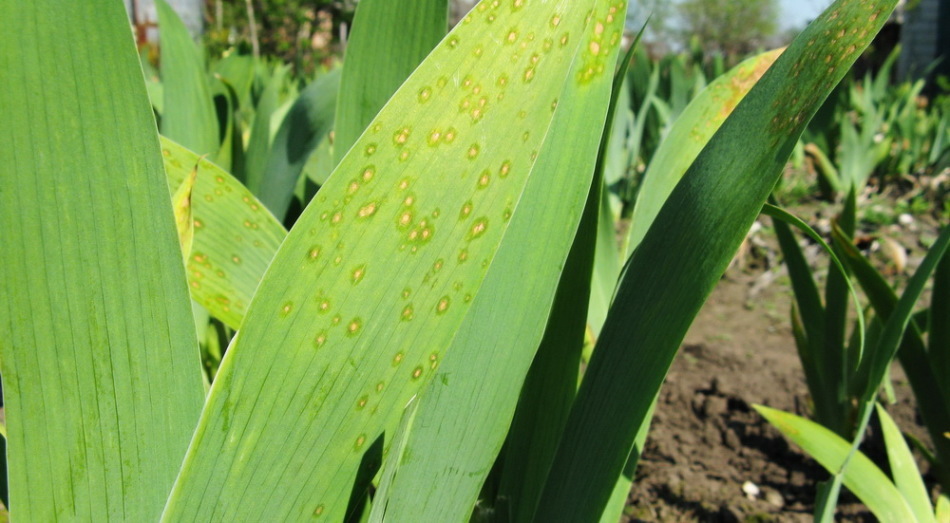 site with irises that do not bloom due to diseases
site with irises that do not bloom due to diseases There are several reasons for this phenomenon:
- long stay in one place. Professional gardeners recommend changing it for irises at least every 4-5 years,
- excessive shade, lack of sunlight,
- they are too young, that is, after planting the roots it took less than 2-3 years,
- is cramped in the flowerbed. If you planted irises close to the building or to each other, they have not been transplanted for a long time or disturbed the distance between the holes during planting, the absence of flowers in the plants is expected, the
- has a deep root arrangement in the ground. Iris spends all efforts on moving the root to the surface of the earth, rather than on the formation and flowering buds,
- the freezing of plants. At extremely low temperatures without sheltering the roots, there is no need to wait for flowers in the summer,
- of the plant disease, when the peduncles are affected.
Transplanting the irises of the bearded to another place: when is it better?
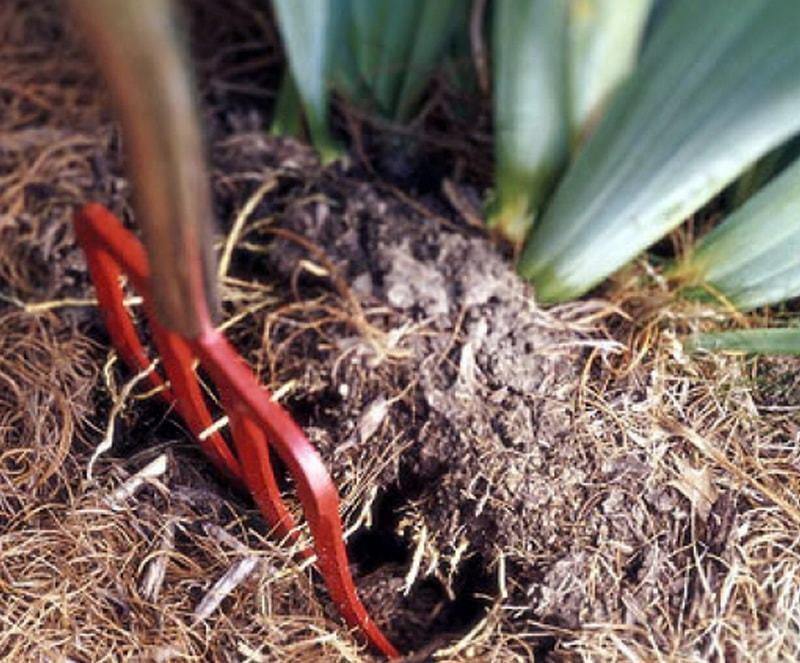 fork near the root of the iris for excavating and transplanting
fork near the root of the iris for excavating and transplanting If you are going to change the location of the bearded irises, do it either in early spring or after flowering - in the beginning of autumn.
Along the way, you can combine the transplant with the separation of the daughter roots for reproduction.
Do not dig in the bearded irises during vegetation - the formation of the peduncle and its flowering.
Pruning irises, caring for irises after flowering
 irises before and after trimming of leaves
irises before and after trimming of leaves When the irises have faded and the last bud has disappeared, break the pedicel under the very base, closer to the root.
Do not touch the leaves until the first frost. With their approach, shorten each sheet by 50%, retaining the conical shape of the fan.
The same procedure is justified in the spring when planting young plants or transplanting old ones. By shortening the leaves, you will let the irises to strengthen the roots until the time of flowering.
To care for the irises after flowering is simple enough:
- manually remove the weeds on the
- flower bed gently loosen the 2 cm soils around them
- add the fertilizers under the root in the autumn before the winter cold
- cover the flower bed with irises spruce branches, dry leaves
Irises - preparation for winter:How to hide?
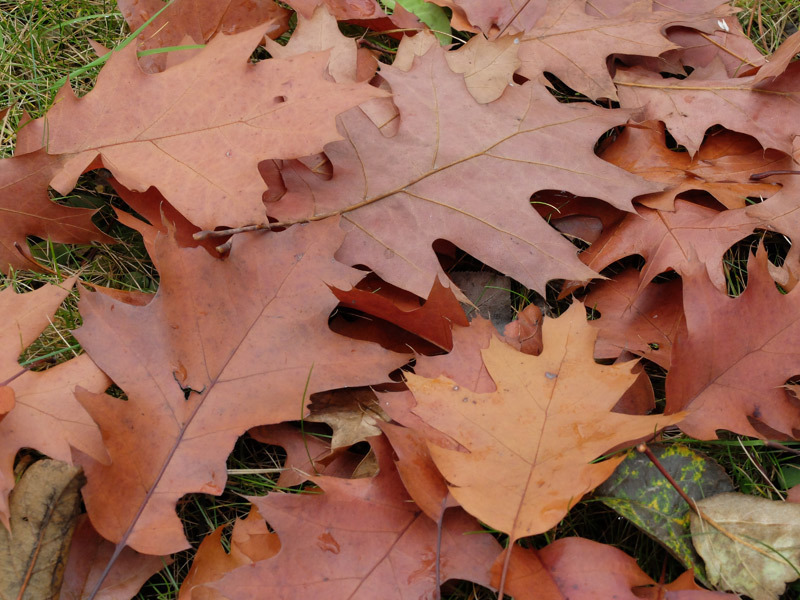 fallen leaves are a material for sheltering irises for the winter.
fallen leaves are a material for sheltering irises for the winter. There are differences in harboring irises that have an onion or cuttings root system:
- for the first ones use fallen leaves, dry sand, chaff, sawdust, and top cover with birch,
- is the second comfortable under a thin layer of drypeat and pine branches. Fallen leaves are capable of provoking the rooting of the roots during the melting of snow in the spring.
Cover not with a solid carpet, but with each plant with a mound, leaving a small tail from the leaves.
The height of the shelter ranges from 10-15 cm. According to the light of selection and horticulture, every centimeter of the shelter conceals 1 ℃ of frost. That is, near the root of irises will be kept 0 ℃ at frosts to -15 ℃.
Re-cover can only be needed in cases where the temperature drops regularly below -15 ℃.
Pay attention to the species / variety. Verified by years, irises have immunity to frost and changing weather conditions in your area. New selection representatives, alas, no. Take care of them with special care and be sure to cover.
- With the arrival of the first frosts cut the leaves of irises in the shape of a cone, leaving 10-15 cm from the ground. Thus, you will protect the development and spread of plant diseases.
- Pay attention to the nature of winter. If it is too little and cold, cover up all your iridium.
Be sure to remove the shelter in the spring when the snow melts and there will be the possibility of free movement through the flower beds. To the bearded iris, try to shovel branches and peat early, so that their roots warmed up in the sun.
Iris Dutch bulbous: planting and care
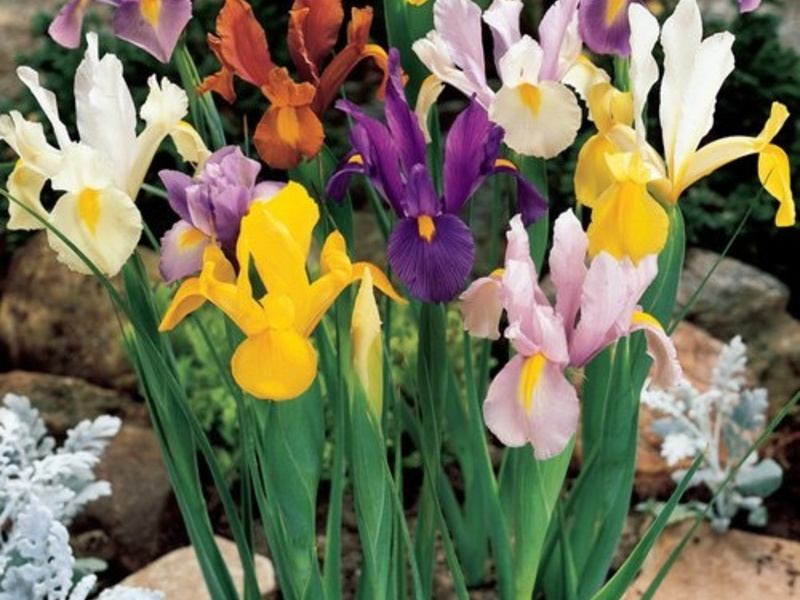 flowerbed of Dutch Dutch irises
flowerbed of Dutch Dutch irises If you decide to diversify your iridium with Dutch varieties, pay attention to the care characteristics:
- plant bulbs in August in a moist fatty soil impregnated with mineral fertilizers, disinfect
- with potassium permanganate, dip them for half an hour into its weak solution, or fungicide,
- the soil must be loosened and put on 10-15 cm using a dry earth mix withfertilizers,
- , deepen the bulbs of Dutch irises to a distance of 3 sizes each. Top with dry ground,
- plant these varieties of irises bouquets in a circle, retreating 10 cm between the holes,
- do not water the plants immediately after planting. They are very afraid of excess moisture, therefore, while watering the "neighbors" in the flowerbed, cover the irises with a film,
- feed them with mineral fertilizers a week before the bud blossoming,
- after flowering, dig out the bulbs for storage until the end of the summer. Usually this procedure is carried out in May. In place of the growth of Dutch irises plant other plants that will blossom and please your eyes, for example, a ballet,
- bulbs check for integrity, cut dry and diseased roots. Place them to be stored in a warm dry room until August,
- if the winters in your region are excessively severe, additionally cover the Dutch varieties of irises.
Flower - iris Japanese: planting and care
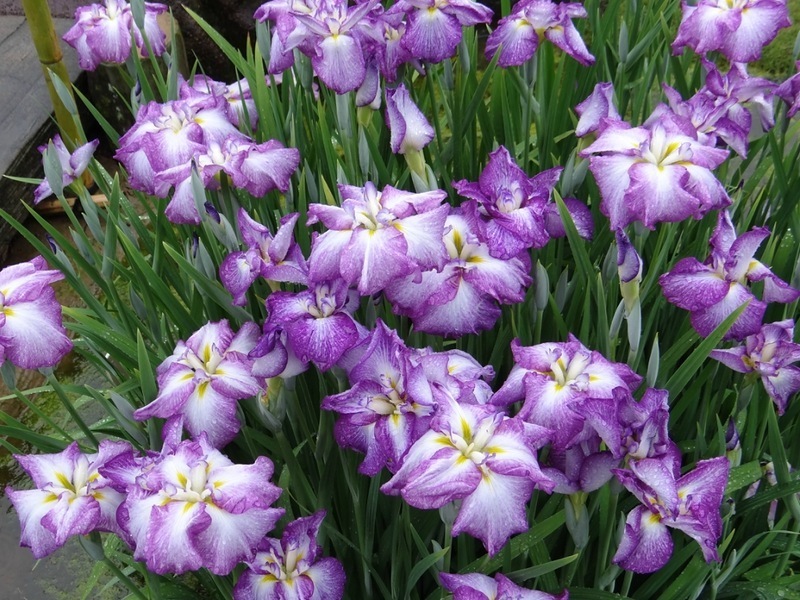 flowerbed with lush colors of Japanese irises
flowerbed with lush colors of Japanese irises Japanese varieties of irises love a lot of moisture during flowering, but without its stagnation. But the cold winters of Russia are not to your liking. Therefore, to shelter them for the time of cold weather is necessary.
There are not so many species of Japanese irises for Russian gardeners as bearded, but they are distinguished by a large diameter of flowers. The last reach up to 25 cm
Consider the nuances of care for this kind of irises, which differ from the others:
- landing - dig holes deep with a matchbox. The root is sprinkled with dry soil and pour. Observe the distance between the holes 30-35 cm,
- multiplication by division of the rhizome is allowed even without digging out the maternal root.
Cut off the young leaves and a fragment of the plant underground with a shovel / knife. Treat the cut with dry charcoal. The young material is planted in the soil 1-2 days after digging, - build a drainage on the flowerbed so that abundant watering does not cause water stagnation and rotting of the roots,
- around the holes, fill the earthen edges so that the water gets directly to the roots of the irises when watering,
- spray the plantsfrom thrips, cut the leaves early in the fall to burn pests and their future larvae,
- sprinkle with soil / sand of the root outlet to the surface. So you will ensure its good development and health to the plant itself.
Flower - iris german: planting and care
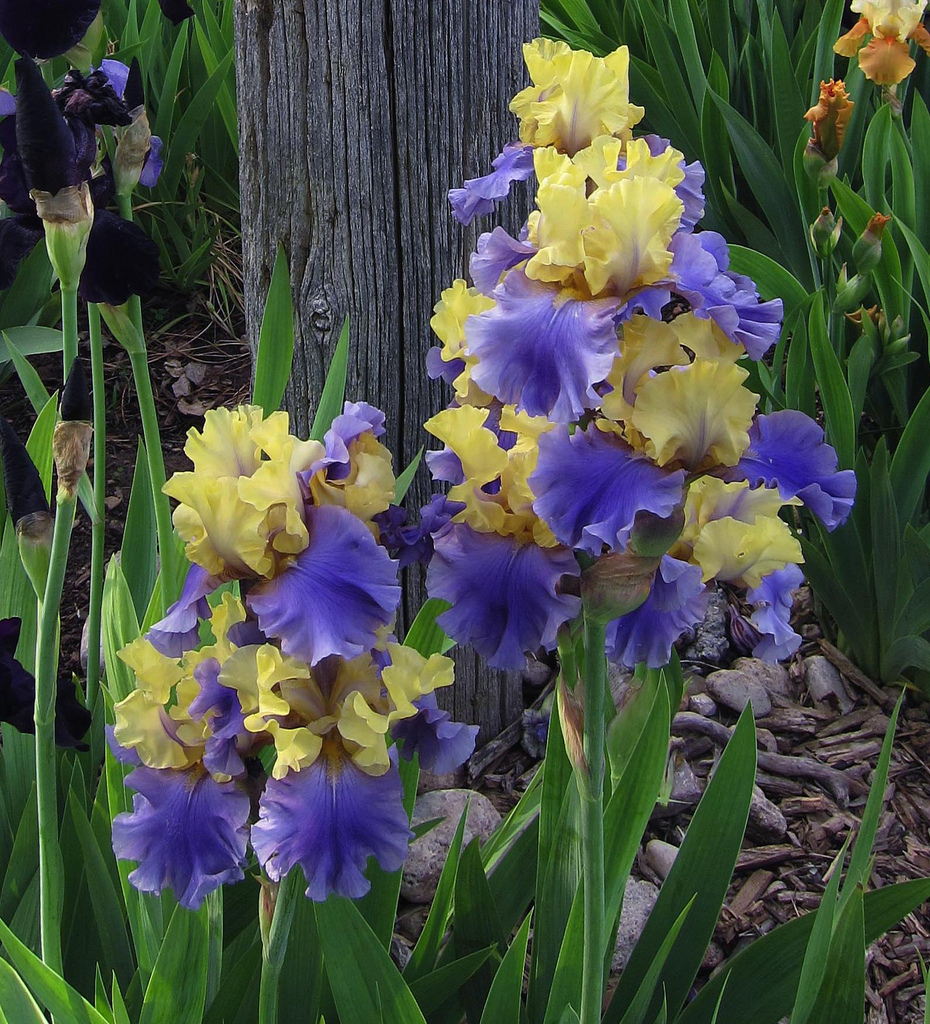 yellow-blue Germanic irises blossom
yellow-blue Germanic irises blossom German iris is the ancestor of modern bearded species. He is still valuable in cosmetology, cooking, everyday life.
Observe the recommendations for planting and caring for the German iris, which were listed at the beginning of the article regarding bearded descendants.
How to plant irises in the country, what to plant next?
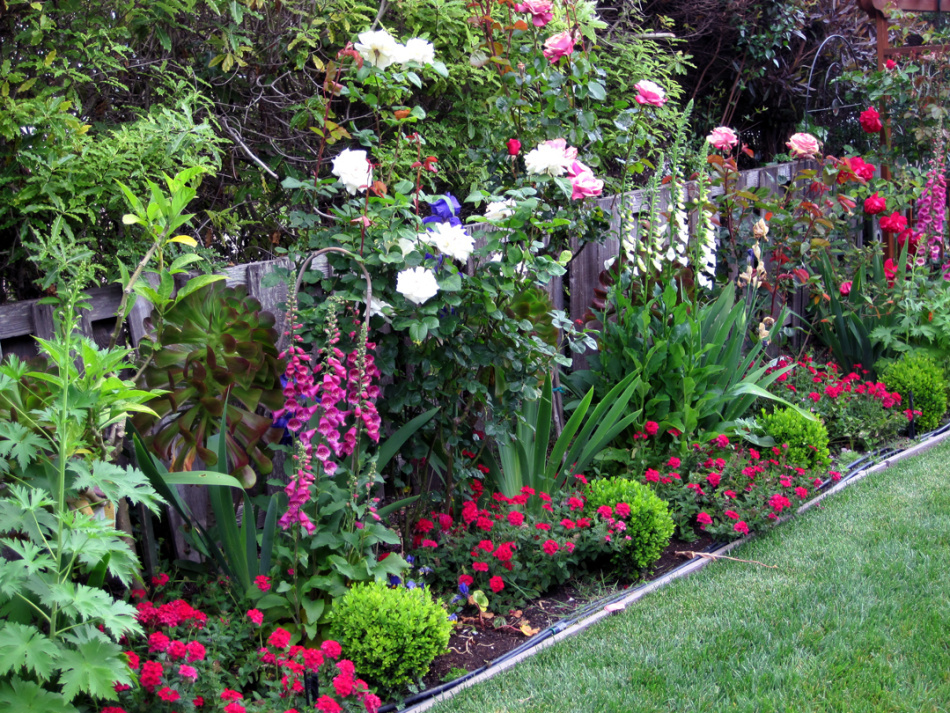 well-groomed flower bed, on which there are also irises
well-groomed flower bed, on which there are also irises Irises feel good both in a mono variant and in a flower bed with neighbors from other flowers / bushes.
Plant them:
- along the
- tracks on the
- round flower beds among the
- stones on the waterfront and in the water line
Take into account a number of points before planting the irises with other plants:
- , their roots are close to the ground or even protrude outwards. Therefore, the roots of neighbors should lie deeper so that they do not interfere with each other,
- the height of irises depending on the species varies from 40 to 70 cm and above,
- they like a lot of sun before lunch and do not favor plentiful regular watering,
- are afraid of weeds.
Next to the irises plant:
- spirea bushes
- marigolds
- bananas
- spruce
- mountain pine
- poppies
- lupines
- lilies
However, the most rational solution is to plant irises of different colors and height together. So care for the flowerbed you need to be the same type without adjusting for differences in approaches from other flowers / shrubs.
Use of irises in landscape design: photo
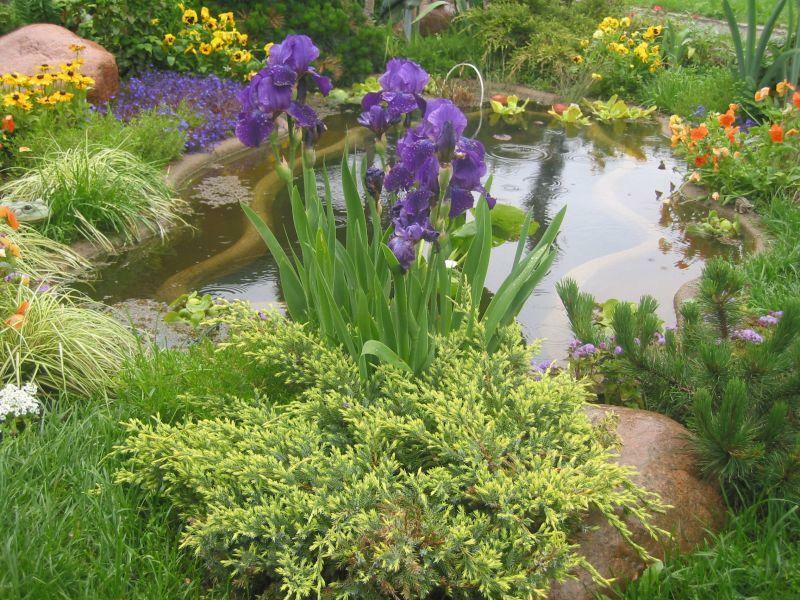 flower bed of irises on the shore of an artificial reservoir
flower bed of irises on the shore of an artificial reservoir The beauty of flowering irises and their unpretentiousness in care have conquered the hearts of professionals and lovers of creating beauty on the site / in the flower garden.
Below is a series of photos of a successful landscape arrangement of irises.
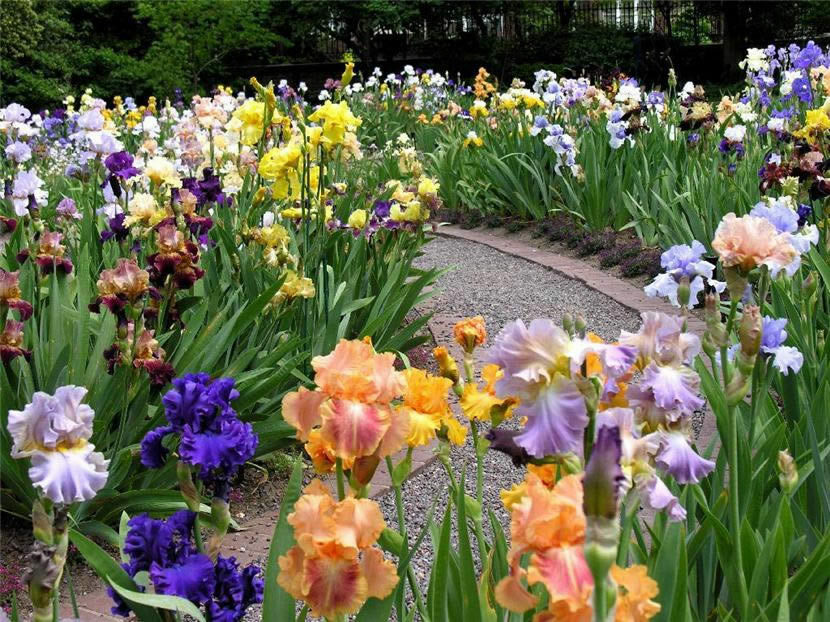 irises in landscape design, example 1
irises in landscape design, example 1 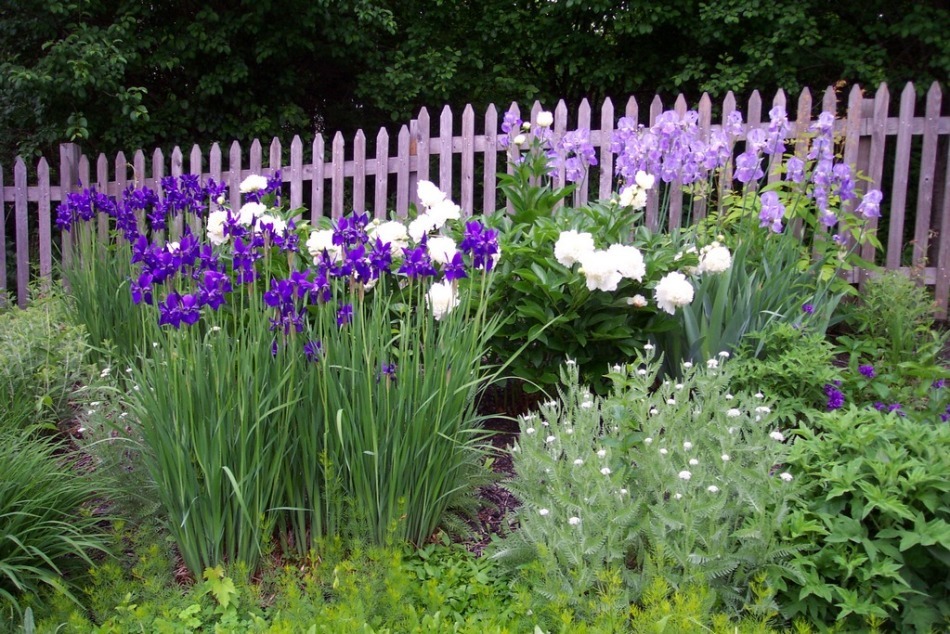 irises in landscape design, example 2
irises in landscape design, example 2 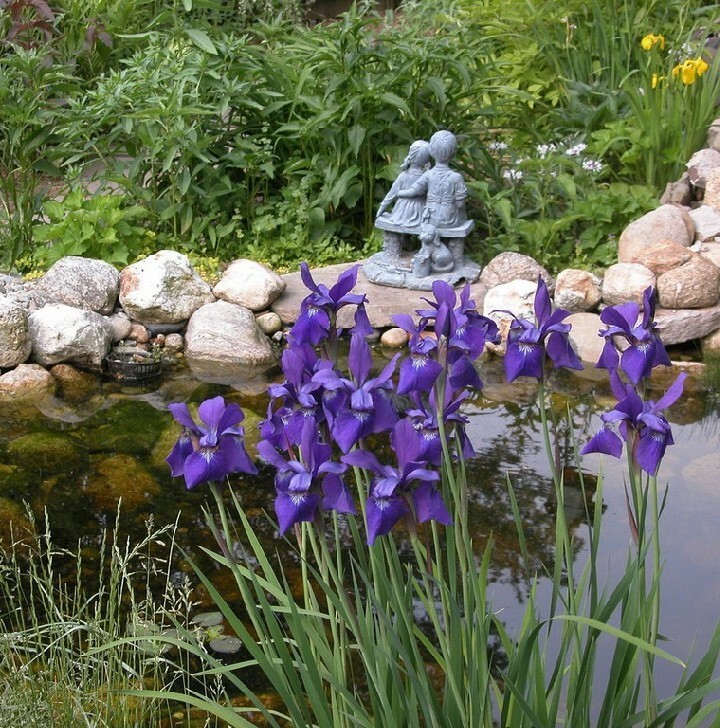 irises in landscape design, example 3
irises in landscape design, example 3 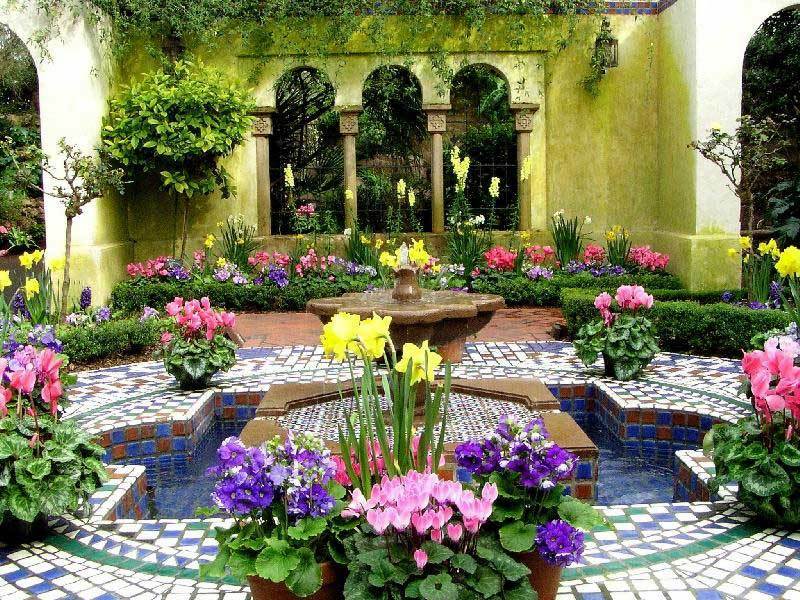 irises in landscape design, example 4
irises in landscape design, example 4 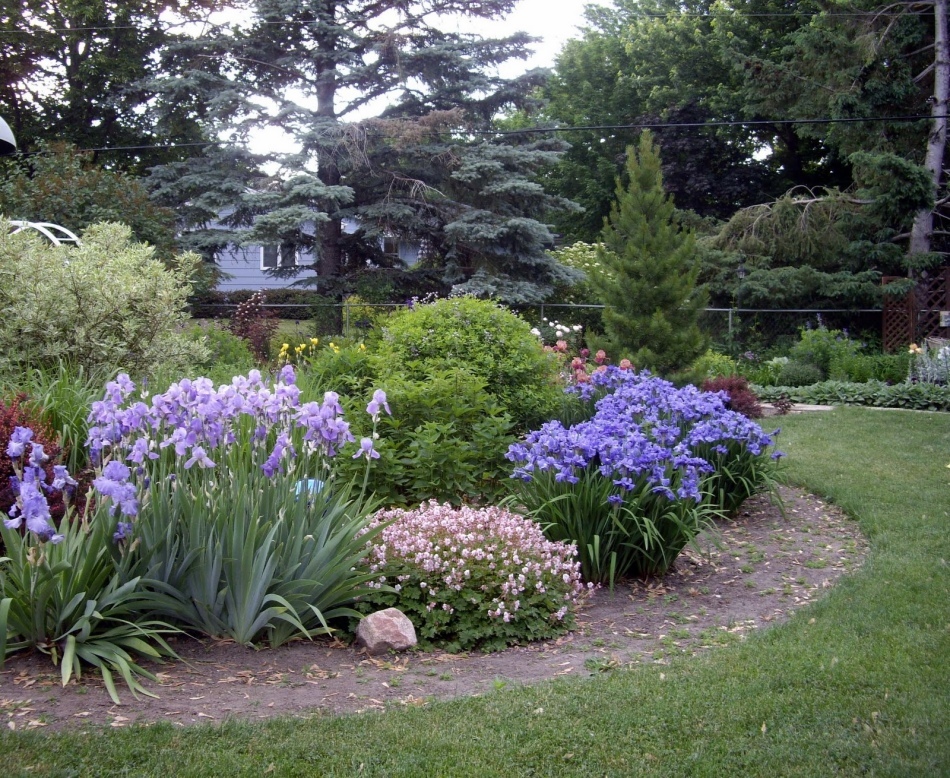 irises in landscape design, example 5
irises in landscape design, example 5 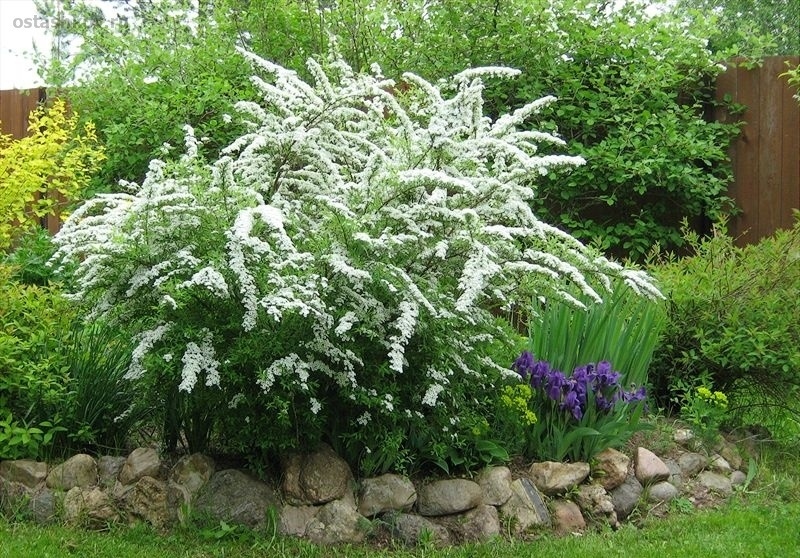 irises in landscape design, example 6
irises in landscape design, example 6 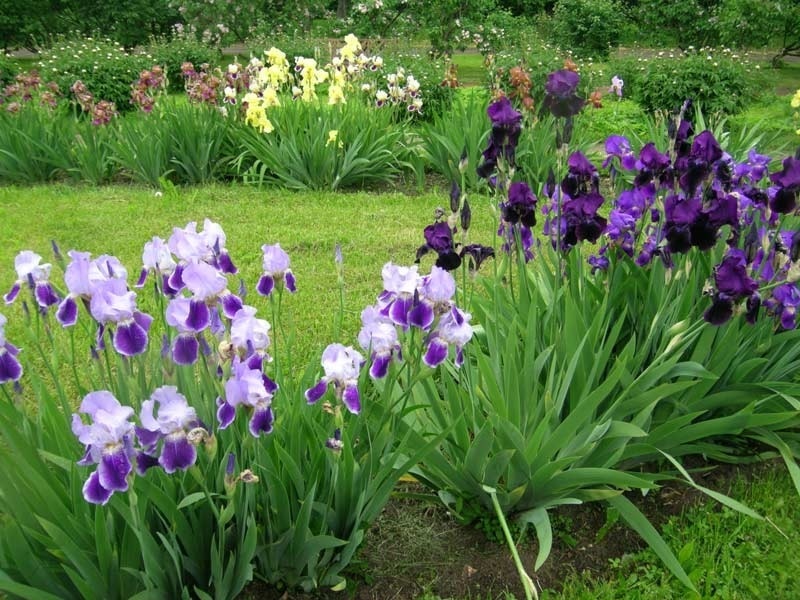 irisesin landscape design, example 7
irisesin landscape design, example 7 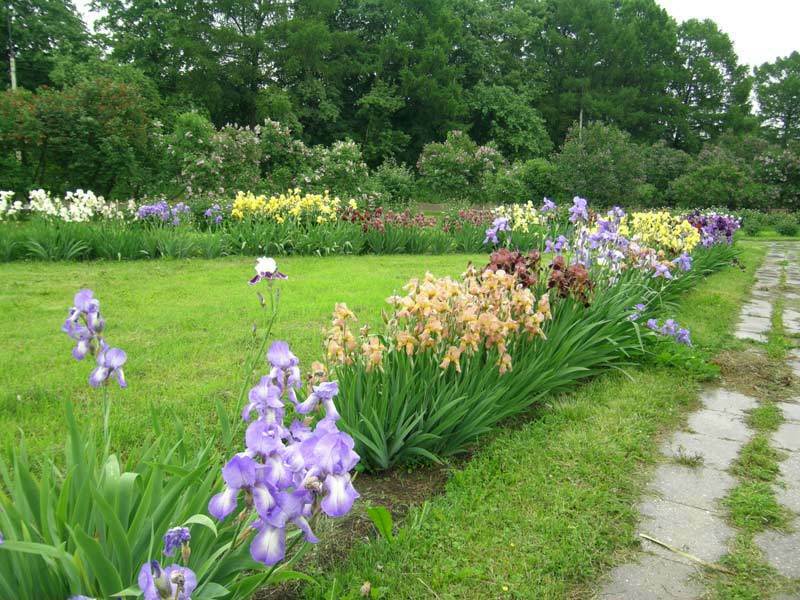 irises in landscape design, example 8
irises in landscape design, example 8 So, we examined in detail the stages of care for irises of different varieties from seeds to seedlings, were inspired from viewing photos of their species and landscape combinations, chose favorite specimenson the Aliexpress.
It remains to work on the development of personal experience with the iris.
Even if you have never planted flowers on your site, it's time to eliminate this gap. Irises to help you!
